voltaicecotone


MArch Urban Design | RC16 | 2021-2022 students

Sirène Abiad | Sohee Cho | Valentina Corallo | Winki Ho Claudia Pasquero | Filippo Nassetti
tutors
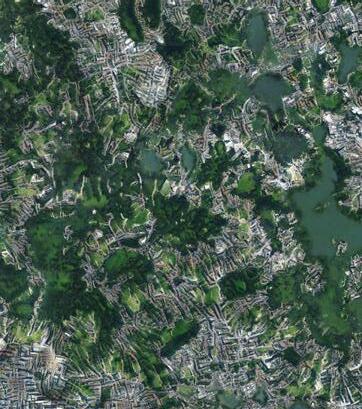






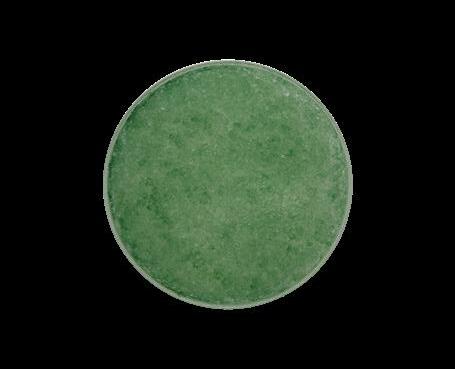
chapter 3 | site 16-23 network formation urban morphogenesis biomaterial growth chapter 1 | energy crisis chapter 2 | moss and microalgae global energy sources london energy infrastructure moss and microalgae symbiosis habitat distribution 4-9 10-15 voltaic ecotone | RC16 | MArch UD 21-22

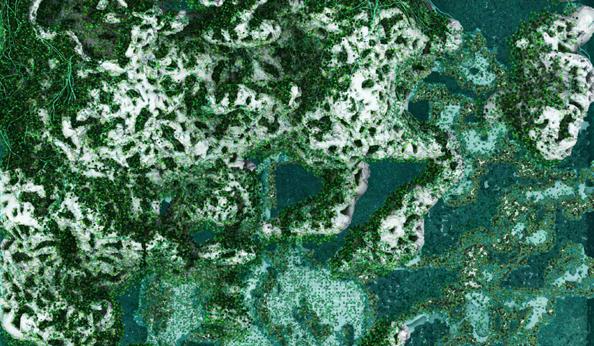


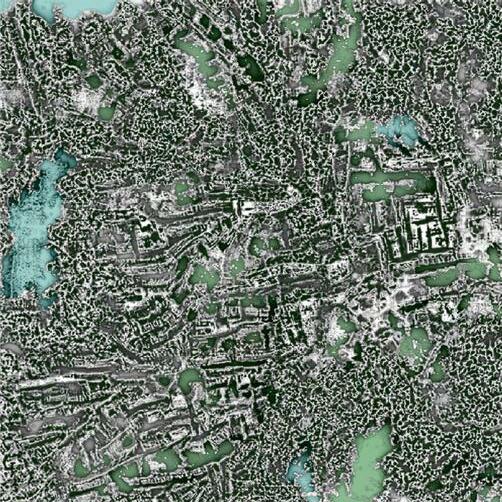
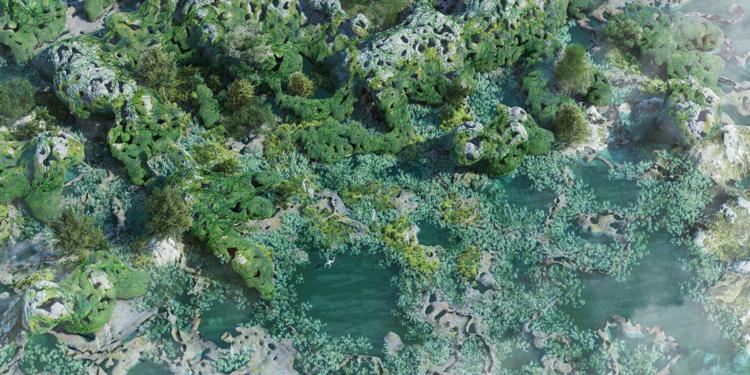


site analysis chapter 4 | urban morphogenesis chapter 5 | architectural prototype 16-23 24-35 36-51 formation morphogenesis growth factors ecotone formations bioenergy system bioenergy landscapetypology allocation typology creation 5table of contents

fig 1.1 AI-generated image (keywords: moss, algae, postnatural, futuristic, urban) voltaic ecotone | RC16 | MArch UD 21-22
For the past centuries, the burning of fossil fuels has been the main source of electricity including coal, natural gas, oil, and nuclear energies, to power cities and habitats. The foreseeable depletion of these non-renewable energies has called for more sustainable renewable sources to be adopted by governments and gradually attain carbon neutrality. However, renewable energy plants have been disrupting the landscape as well as the ecological and environmental phenomena around them, creating a barrier within their micro-environment. The energy gathered by these systems is then collected by governmental and corporate powers, keeping it centralised and not widely distributed to the rest of the city.
VoltaicEcotone proposes a biological energy network model that is integrated into the urban fabric and becomes accessible to humans while fostering non-human habitats in London. This infrastructure is powered by the urban morphological transformation, propagating habitats hosting bio-materials – moss and microalgae – that will be the center of the production of our energy. While being an alternative to renewable and non-renewables, this new infrastructure will be beneficial to humans and non-humans while reducing the environmental impact and connecting back the urban fragments of the city through bioenergy ecotones.
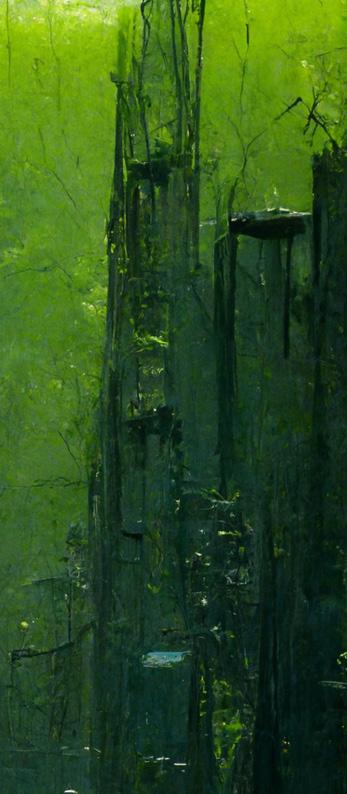
abstract | 3abstract |

fig 1.2 AI-generated image (keywords: moss, algae gel, electricity, network, future city, connectivity, ecotone, moody, foggy) voltaic ecotone | RC16 | MArch UD 21-22
chapter 1 | energy crisis

Chapter 1 explores the challenges of non-renewable and renewable energy generation methods and questions their effectiveness and impacts on humans and non-humans alike. World energy sources are studied in order to assess their impacts on the environments. The research is then directed more specifically towards energy trends in the United Kingdom and London’s socio-political climate pertaining to energy in order to assign a site of intervention.
Current energy generation methods are land-intensive. They disturb animal migration flows, and lead to the disruption of habitats. Both renewables and nonrenewables, whether in scarcity or not, are implemented in a centralised manner and make land unusable. As a result, the energy grid is inaccessible and unstable for users, and at the same time becomes an obstruction for non-human habitats. In East London, fuel poverty is a major issue, with 22.5% of households under the poverty line. The disruption and inefficiency of the existing energy grid also leads to the decline of biodiversity in the area. VoltaicEcotone proposes a more sustainable alternative to current centralised energy systems and design an bio-energy infrastructure integrated into the urbanscape, which both humans and non-humans can benefit from.
chapter 1 energy crisis 5




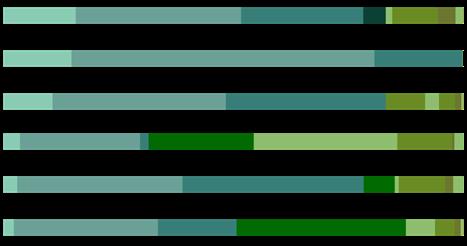
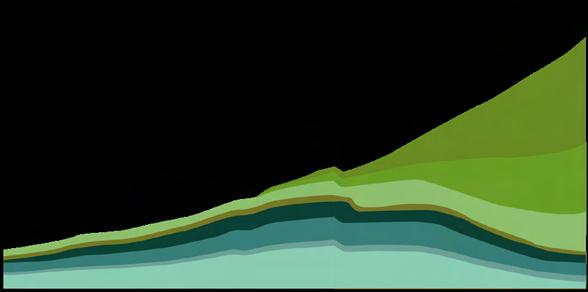

fig 1.2 world energy sources and usage map main energy source on Earth coal gasoil storage nuclear non-renewable biomass hydro wind solar others renewable and others energy usage (by country and territory) China India Turkey Japan Phillippines South Korea Germany Sweden Hong Kong United Kingdom United States France world energy usage trend coal gas oil 33.8% 22.8% 4.4% non-renewable 61% hydro nuclear wind solar others 16.8% 10.1% 6.1% 3.3% 2.7 renewable and others 39% world energy usage 19901980 0% 10% 20% 30% 40% 50% 60% 2000 2010 2020 2030 2040 2050 voltaic ecotone | RC16 | MArch UD 21-22
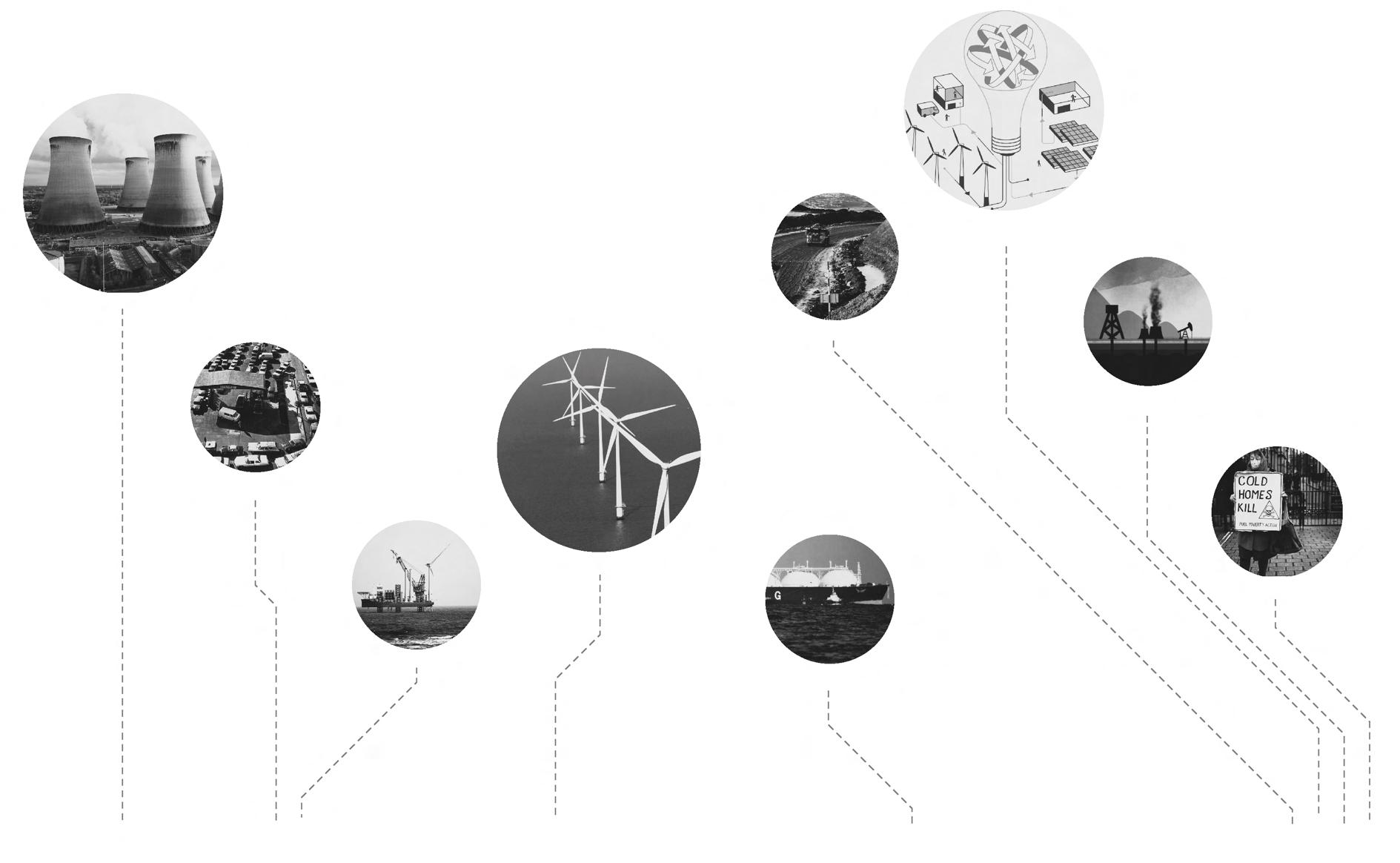
development of energy industry in the United Kingdomfig 1.3 centralisation of British gas 1979 energy crisis UK becomes net exporter of fossil fuel energy introduction of renewable energy UK becomes importer of fossil fuel energy fuel prices rise during pandemic renewable energy makes up 47% of UK electricity generation last coal mine closes down in UK households in fuel poverty double 1970 1980 1990 2000 2010 2020 non-renewable renewableenergy type chapter 1 energy crisis 7

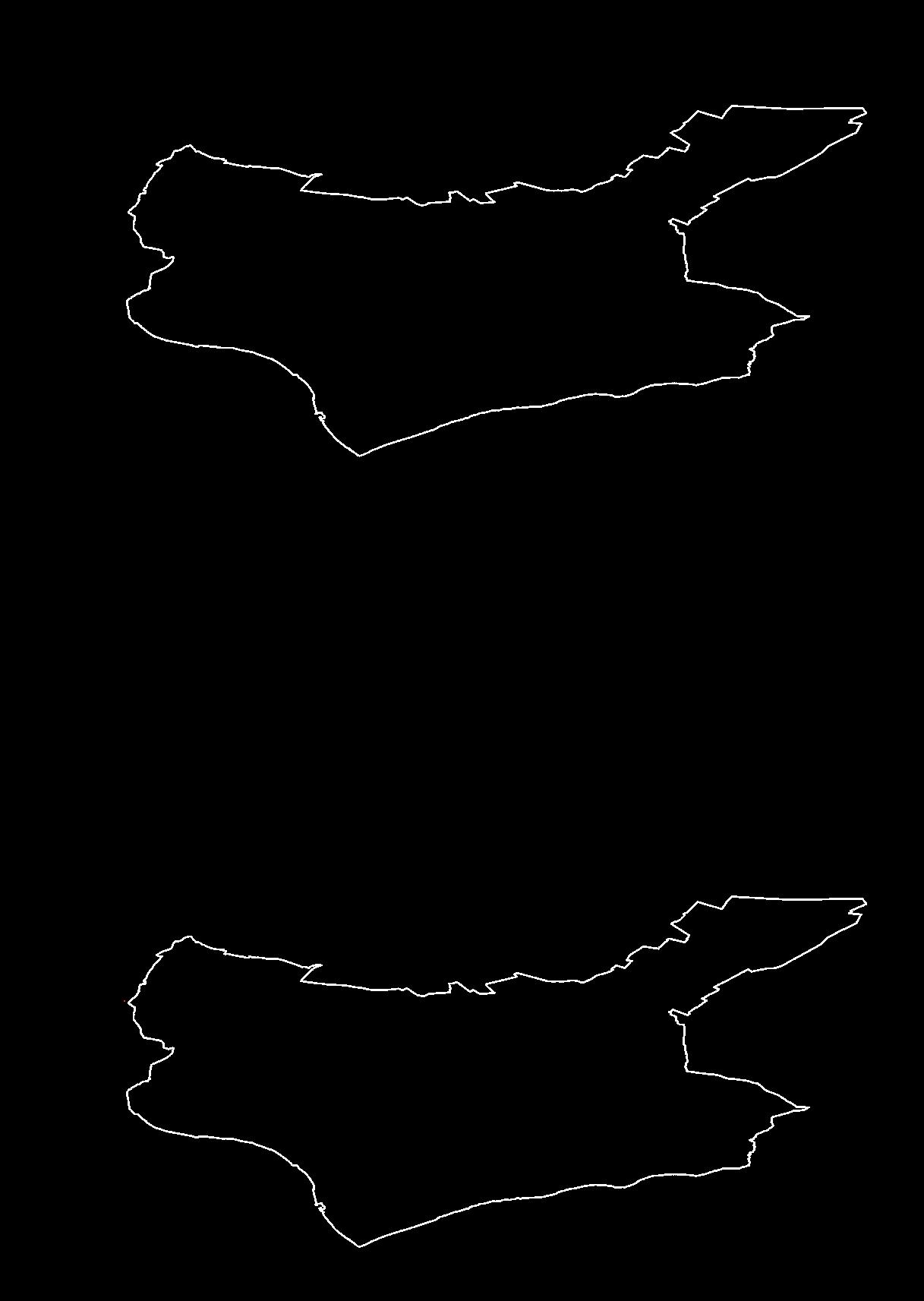

development of energy industry in the United Kingdom centralised and decentralised energy networksright | left | fig 1.4 fig 1.5 biomass coal gas oil nuclear hydro solar wind storage others 226.9 2260 capacity (MW) energy type future decentralised energy infrastructure secondary transmission lines decentralised transmission lines primary transmission lines energy production centre energy type voltaic ecotone | RC16 | MArch UD 21-22 current centralised energy infrastructure

energy transmission in Londonfig 1.6 5 km overhead line cable TQ transmission line TL transmission lineenergy distribution fuel poverty score 0.0 / -5.0 -5.0 / -10.0 -10.0 / -15.0 chapter 1 energy crisis 9
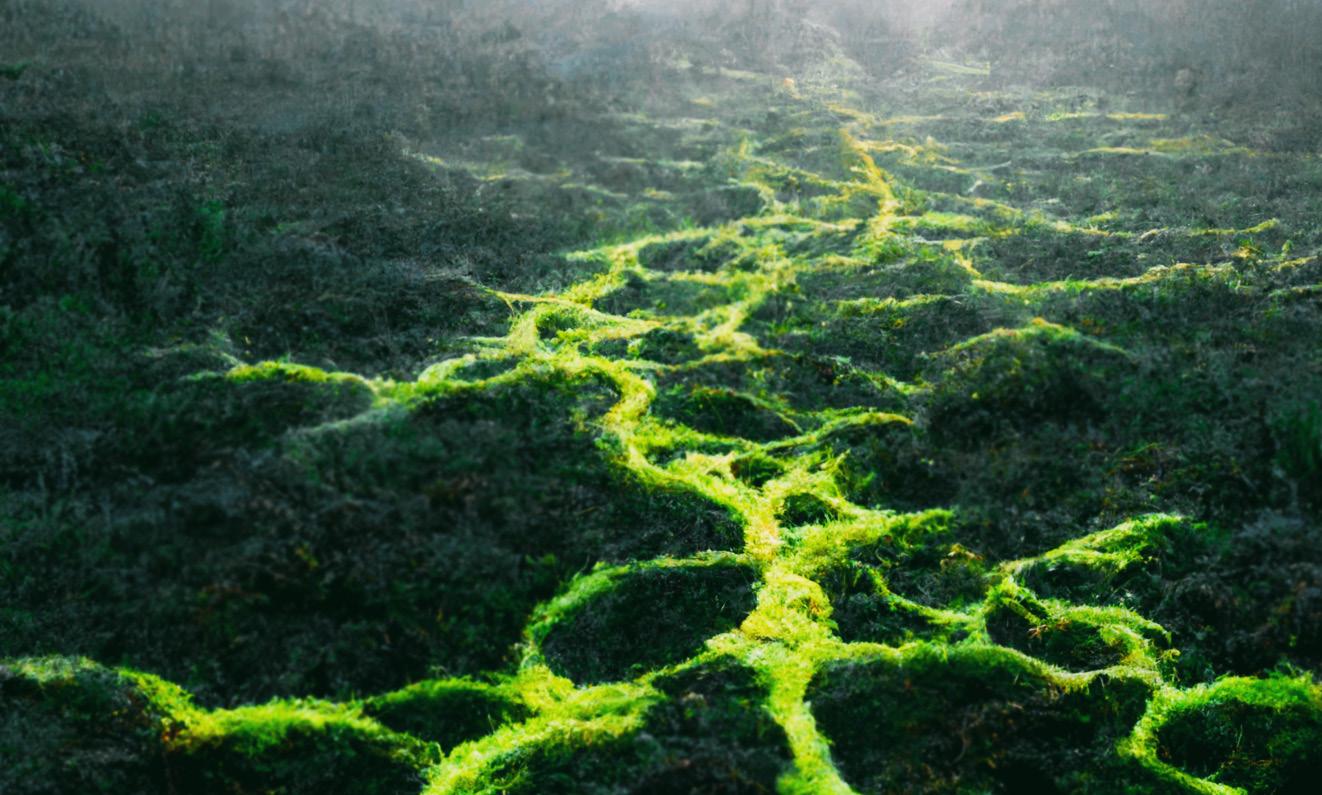
AI-generated image (keywords: ecotone, anthropocene, post-natura,l moss, algae, infrastructure, bio intelligence)fig 2.1 voltaic ecotone | RC16 | MArch UD 21-22
chapter 2 | moss and microalgae

Chapter 2 explores moss and microalgae as main bioenergy sources for the new post-anthropocentric urban energy landscape. A study of their characteristics, mechanisms and applications is conducted in order to test the coexistence of these materials and their symbiotic, mutually beneficial relationships. Moss and microalgae are two of the most ancient, widespread, and simple organisms in the world. Their high resilience and adaptability has allowed them to flourish in a wide variety of habitats, ranging from freshwater and woodlands to degraded abandoned sites. They are found among each other in natural environments, and thrive from their spatial adjacencies. Both photosynthetic organisms that consume carbon dioxide, they transform the breakdown of carbon dioxide into energy, which can then be converted into electricity. Not only are they energy generating, they can also stabilise habitats and help new plants grow by revitalising soil and retaining water.
These studies then became the basis of further experiments with moss and microalgae, where their characteristics are tested in order to understand how they collaborate with one another in the proposed energy infrastructure.
11chapter 2 | moss and microalgae


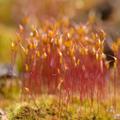

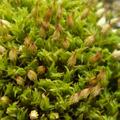

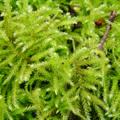

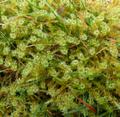
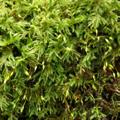
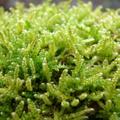


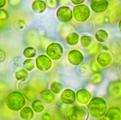
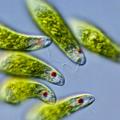
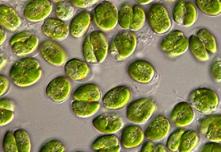
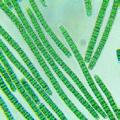
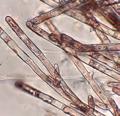



symbiotic relationship between moss and microalgae moss and microalgae and their habitatsright | left | fig 2.2 fig 2.3 shade oxygen biodiversity environmental indicators water purification energy source food source therapeutic effects carbon dioxide starch water cellulose sunlight oil temperature aquatic humidity soil pH / type gametophyte chlorophyll nutrients microalgae moss inputs photosynthetic factors outputs benefits Schizochytrium Thalassiosira pseudonana Spirulina Audouinella Chrysophyta Chlorella vulgaris Euglena viridis Tetraselmis suelcica habitats and speciesmoss | |microalgae habitats and species freshwater coastal water Hypnum cupressiforme Ceratodon purpureus Rhytidiadelphus squarrosus Isothecium myosuroides Brachythecium rutabulum Orthotrichum Bryum capillare Leocubryum glaucum Eurynchium striatum Hypnum cupressiforme Thamnobryum alopecurum Dicranum scoparium improved grassland broadleaf woodland coniferous woodland voltaic ecotone | RC16 | MArch UD 21-22

habitat distribution in Londonfig 2.4 5 km coastal waterimproved grassland broadleaf woodland coniferous woodland freshwater 13chapter 2 | moss and microalgae
temperature control
purified water LED light source
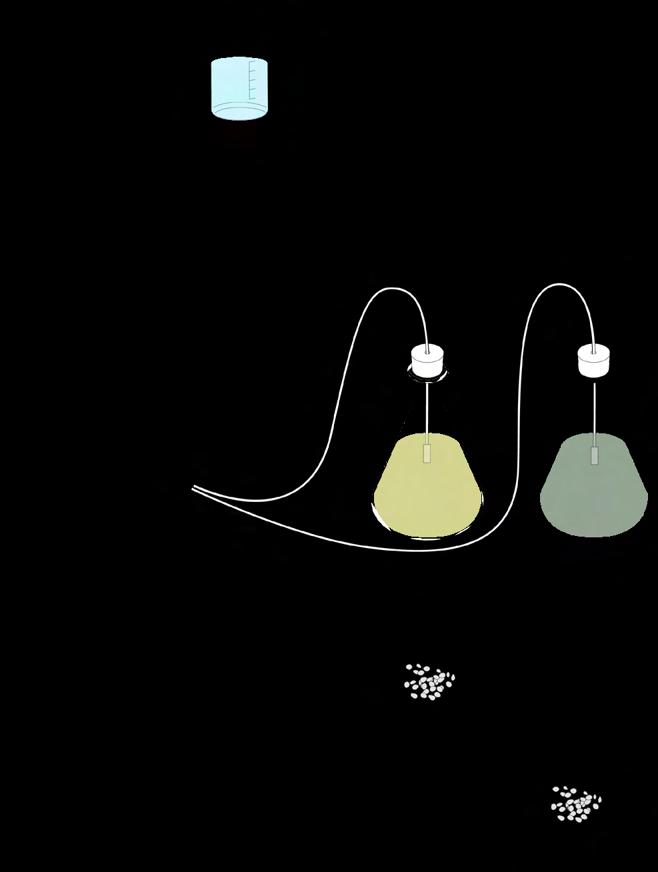
air pump chlorella spirulina
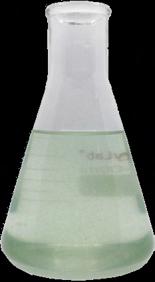





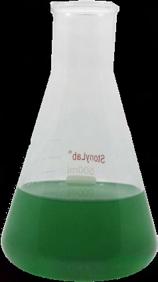
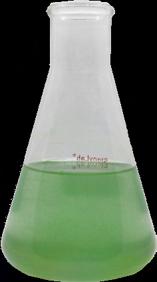

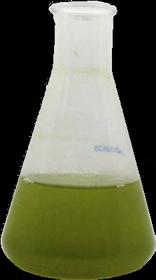


spirulina nutrient solution chlorella nutrient solution


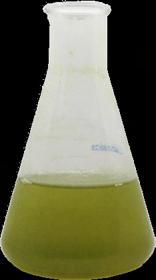
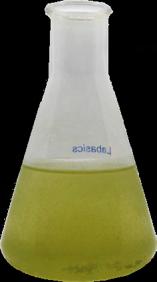
Sa, CO3-2, Cl, NO3, P, K, Ma, S, FE, B, CU, Mn, Mo, Zn
NaCl, CaCl3, MnCl2, NaNO3, ZnSO4, CuSO4, KH2PO4, FESO4, MaSO4
microalgae cultivation catalogue - chlorella and spirulina microalgae cultivation set-upright | left | fig 2.5 fig 2.6
day 5 day 1 day 6 day 2 day 7 day 3 day 8 day 4 day 5 day 1 day 6 day 2 day 7 day 3 day 8 day 4 chlorella spirulina voltaic ecotone | RC16 | MArch UD 21-22
chlorella in hydrogel

hydrogel
spirulina in hydrogel
chlorella culture
agar solution

chlorella with agar
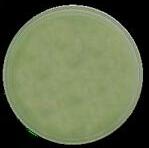




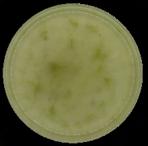
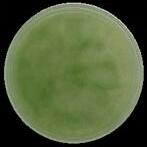
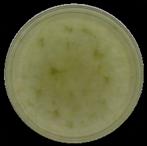

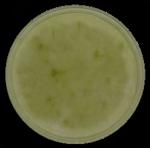



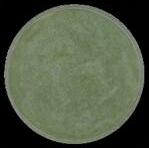



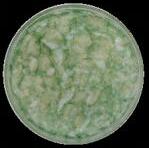
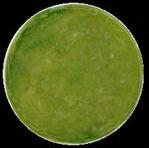

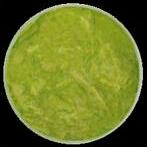
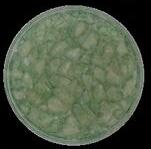



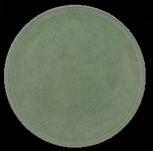
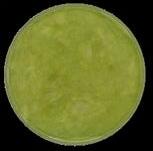


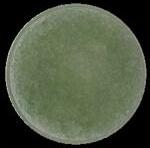



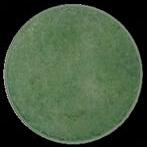
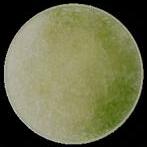
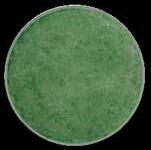
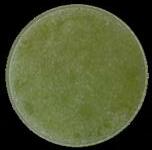
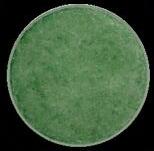
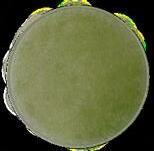


spirulina culture
spirulina with agar
chlorella with alginate
sodium alginate solution
spirulina with sodium alginate
microalgae and gel mediums catalogue - chlorella and spirulina microalgae and gel medium experiment set-upright | left | fig 2.7 fig 2.8 microalgae + agar + nutrients microalgae + alginate microalgae + agar(large) + water day 1 day 3 day 5 day 7 day 9 day 11 day 13
15chapter 2 | moss and microalgae

satellite image of Limehouse, East Londonfig 3.1 voltaic ecotone | RC16 | MArch UD 21-22
chapter 3 | site selection
Chapter 3 contextualises the research and ideas onto the urban environment. The characteristics and optimal conditions for moss and microalgae growth in East London are mapped out in order to determine the distribution of the biomaterials across the city and predict potential energy production sites. In parallel, human and non-human concentration areas are studied to generate the consumption network that will be connected to the biomaterial energy sources. Together, they are then translated onto the urban scale via machine learning. Machine learning methodologies used to translate this network into urban layers include GAN adversarial network, a deep learning program which identifies patterns from the input data to then translate onto the output data.
Via this process, East London is transformed into a multi-faceted urban landscape that promotes the propagation of biomaterials such as microalgae and moss. A wide range of decentralised energy production and consumption sites connected through a rhizome-like network is thus created. This morphogenesis introduces a seamlessly integrated energy infrastructure as a new urban layer.
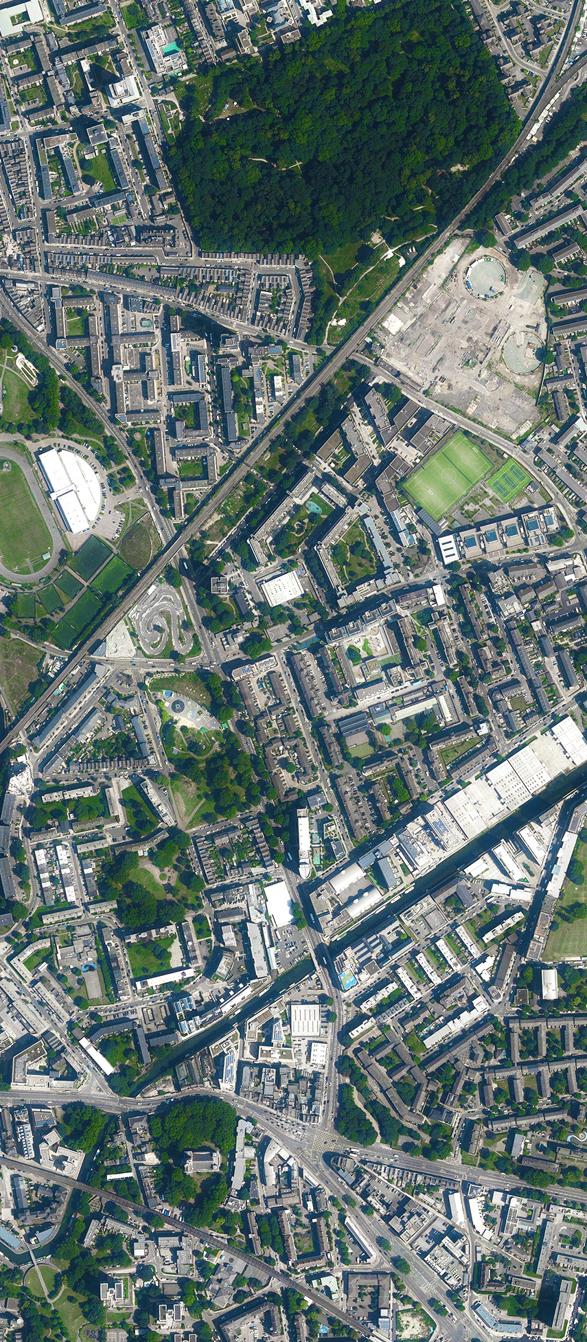
17chapter 3 | site selection

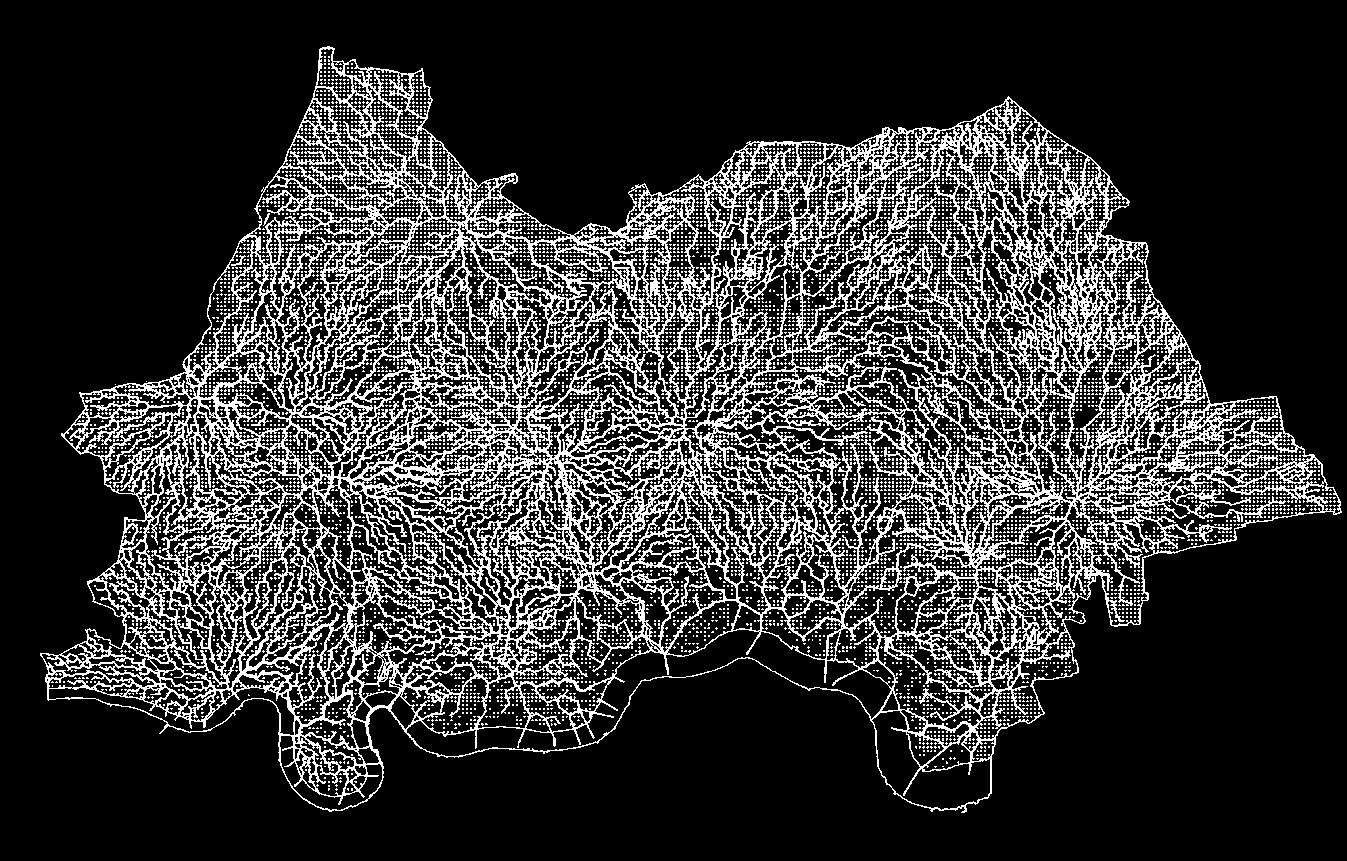
moss and microalgae hotspots in East Londonfig 3.2 green spaces indirect sunlight biomaterial growth nodescarbon dioxide emission direct sunlightwater 2 km voltaic ecotone | RC16 | MArch UD 21-22
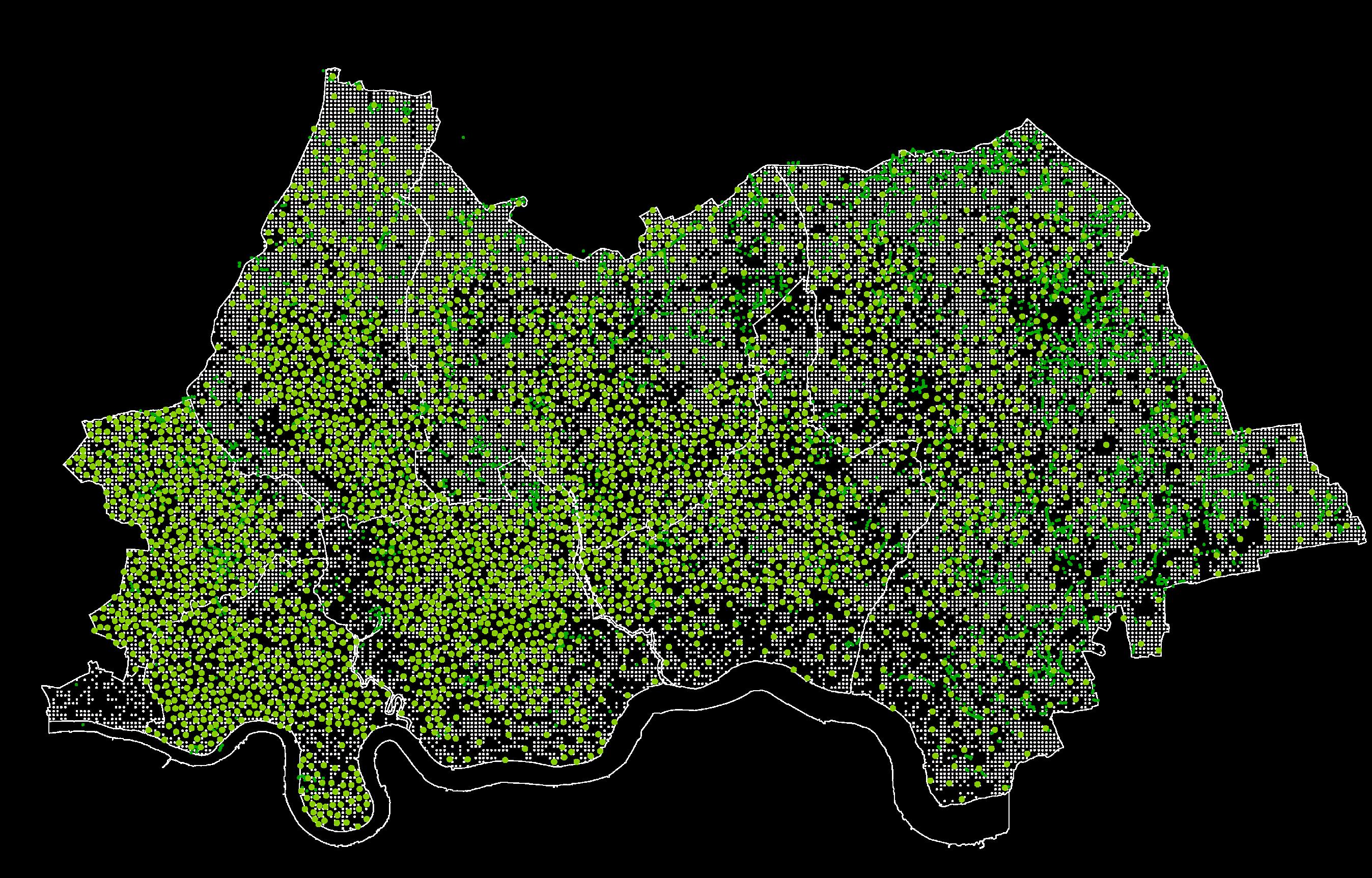
fig 3.3 energy consumption hotspots in East London 2 km green spaces population density 19chapter 3 | site selection
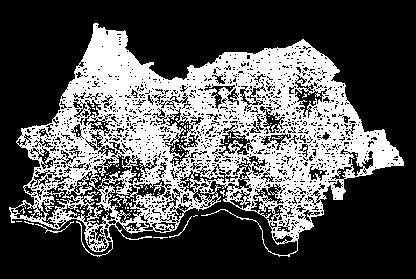
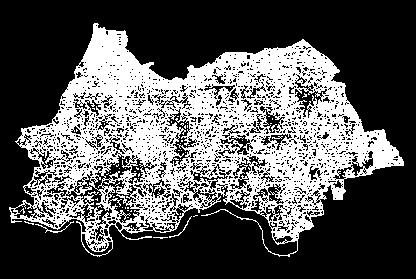
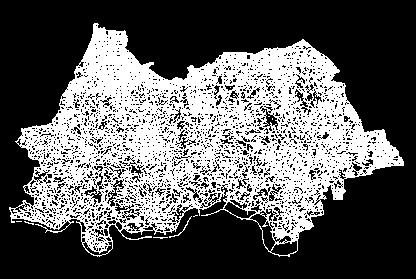

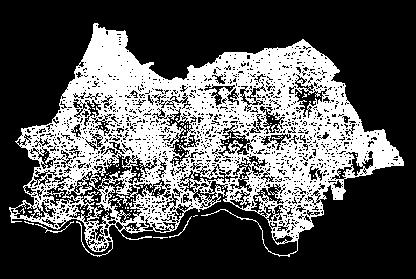
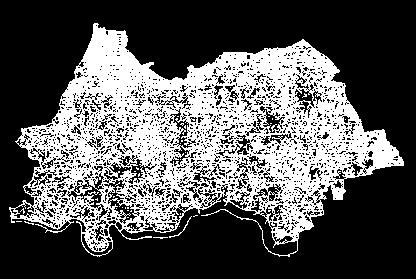


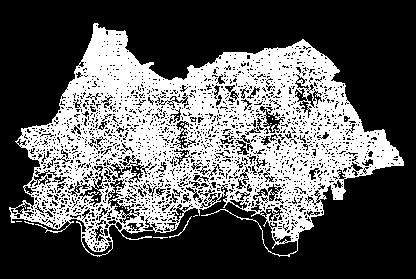
fig 3.4 energy network growth path length 3000m path length 1000m path length 5000m path length 500m path length 4500mpath length 4000m path length 2000m path length 2500m path length 0m voltaic ecotone | RC16 | MArch UD 21-22

new energy network in East London and urban transformationfig 3.5 energy network and paths2 km 21chapter 3 | site selection
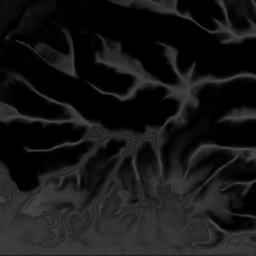




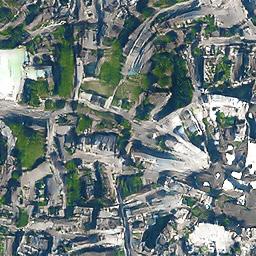
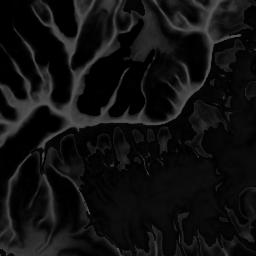


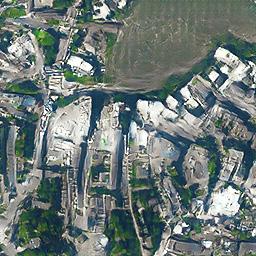

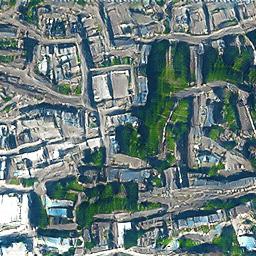
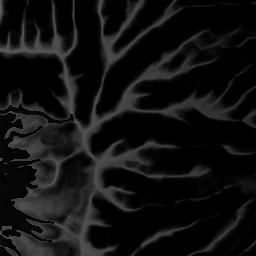


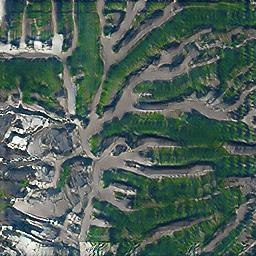


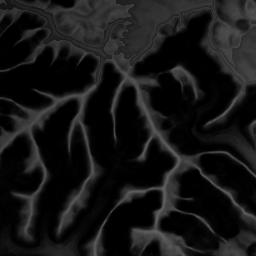




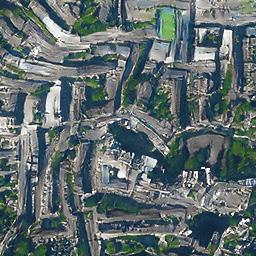
machine learning process of generative adversarial networkfig 3.6 epoch 52 epoch 132 epoch 200epoch 144epoch 62 epoch 26 epoch 102 epoch 170 epoch 181 epoch 01 epoch 71 epoch 149 voltaic ecotone | RC16 | MArch UD 21-22
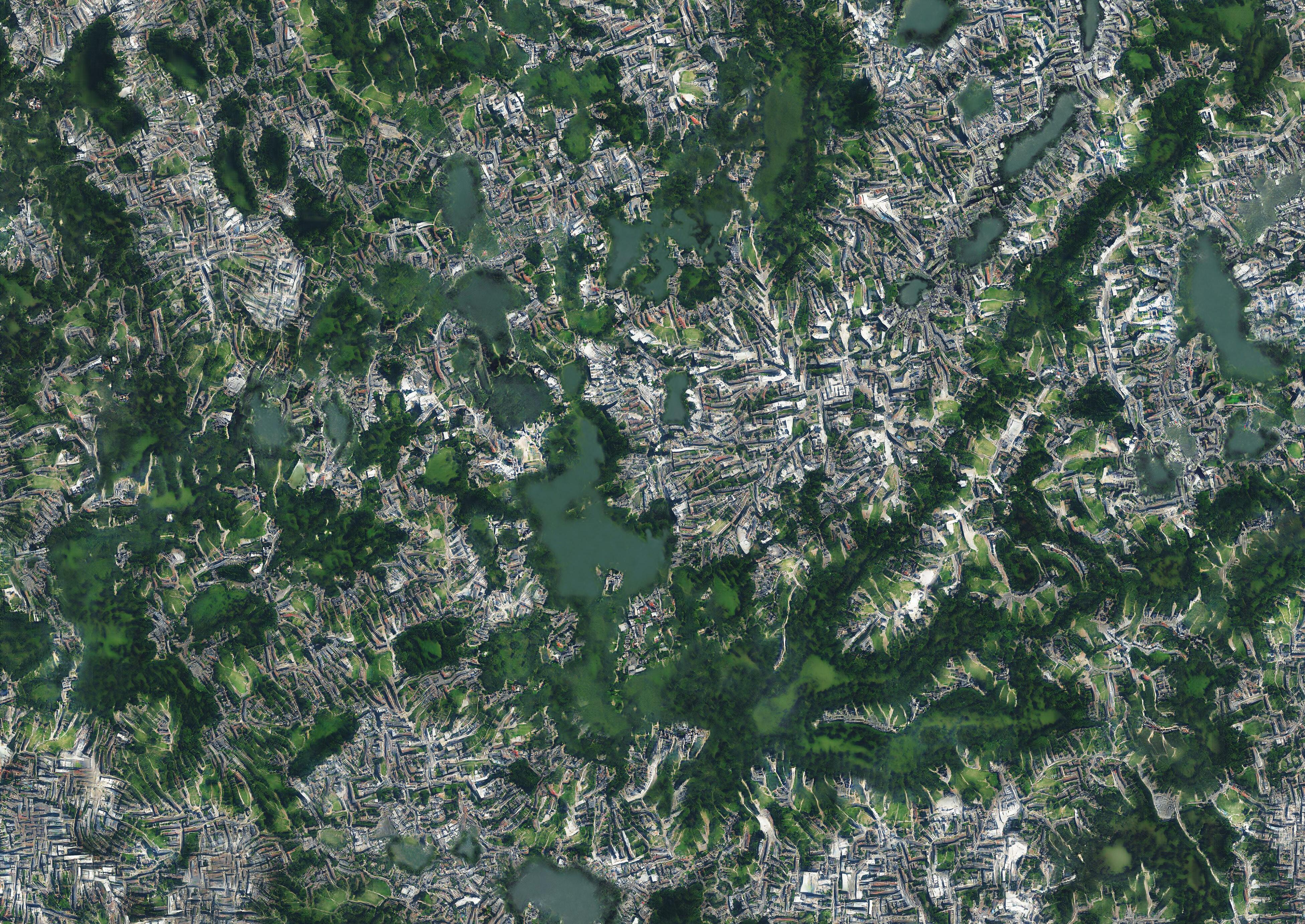
fig 3.7 urban morphogensis of Limhouse, East London 23chapter 3 | site selection

urban transformation of Limehouse, East Londonfig 4.1 voltaic ecotone | RC16 | MArch UD 21-22
chapter 4 | urban morphogenesis
The network created via GAN adversarial network more specifically translates into various urban elements, such as green space, waterbodies, and urbanscape. The transitional space between the urban landscape and the aforementioned natural landscapes are then allocated as “energy ecotones”. These ecotones create spaces for both non-humans and humans and distribute energy in a decentralised manner. These energy ecotones are categorized as transitions between urban and green space or forestscape, known as woodland ecotones, urban and aquatic areas or water bodies, known as aquatic ecotones, and urban ecotones within denser areas within cities with green areas of respite.
Each ecotone hosts a production, nonhuman, and human programme. These types of programmes support energy generation, and a sympathetic, sustainable environment among nonhuman and human organisms. Nonhuman habitats encourage an increase in biodiversity within London, and human habitats are designed to respectfully integrate with the natural surroundings. The ecotones are designed to organically spread out towards the rest of London.

25chapter 4 | urban morphogenesis


urban transformation 1km2 area urban transformation 500m2 arearight | left | fig 4.2 fig 4.3 100 m 50 m urban transformation (1km2 area) urban transformation (500m2 area) voltaic ecotone | RC16 | MArch UD 21-22

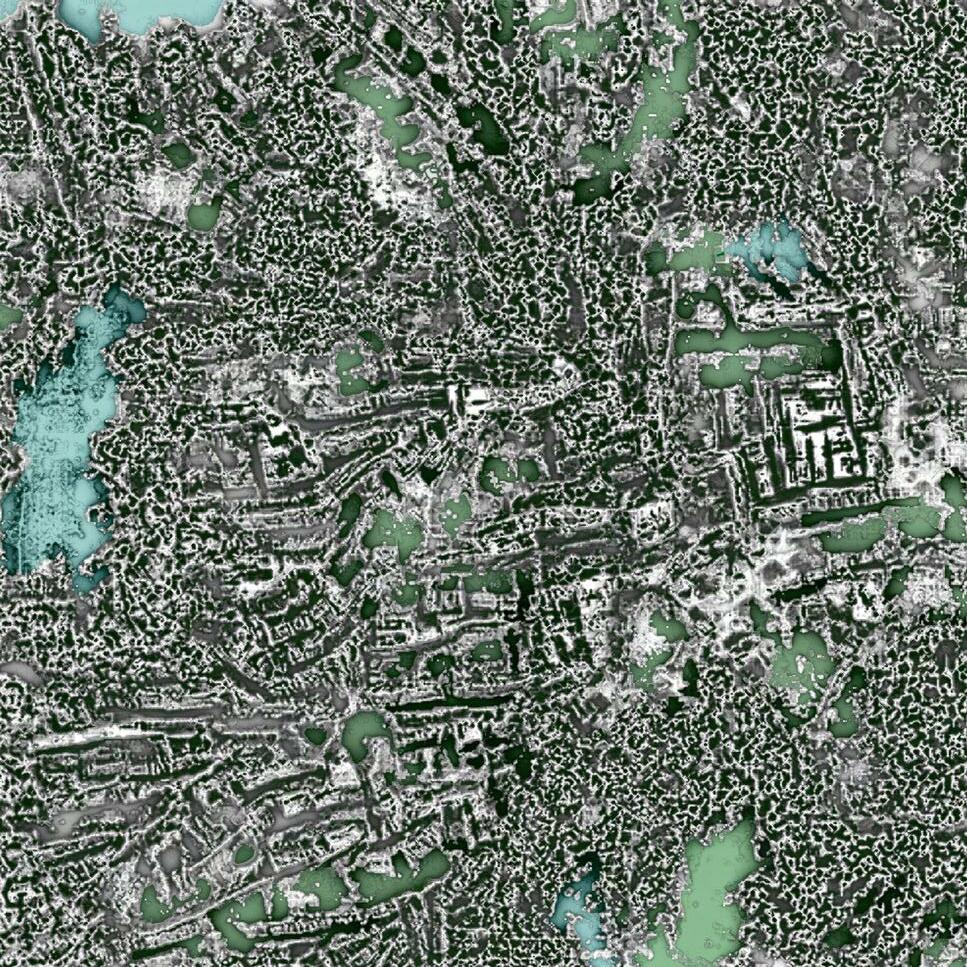
voxelisation of urban transformation 500m2 area typology allocation of urban transformation 500m2 arearight | left | fig 4.4 fig 4.5 50 m 50 m typology woodland aquatic urban voxelisation of urban transformation typology allocation 27chapter 4 | urban morphogenesis
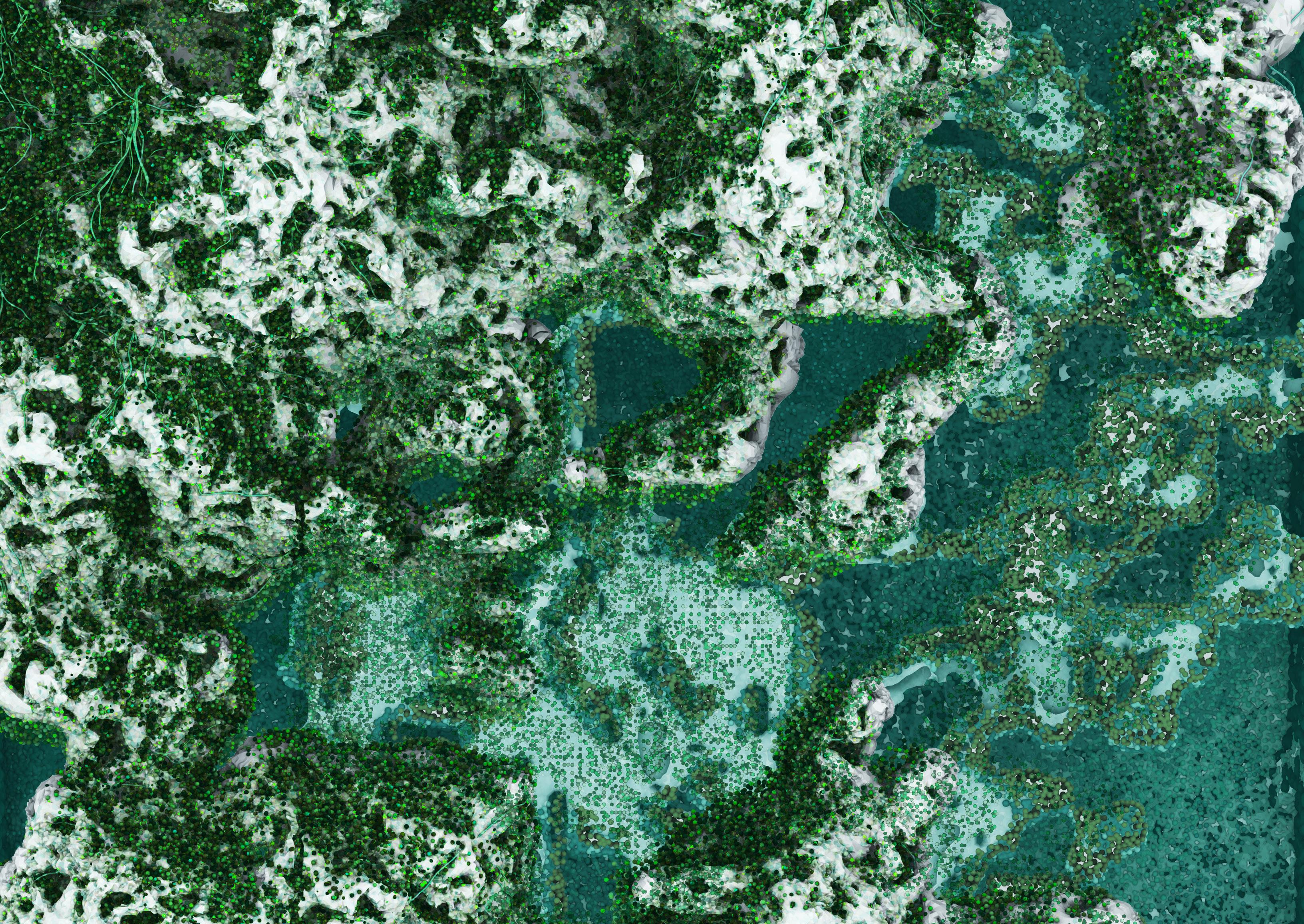
fig 4.6 aquatic typology top view - biomaterial colonisation and microalgae extraction system
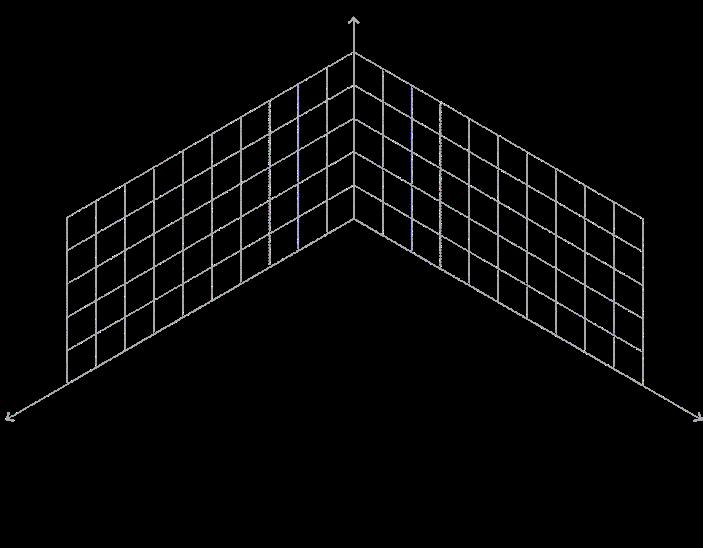
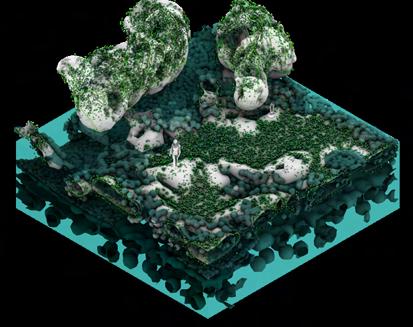

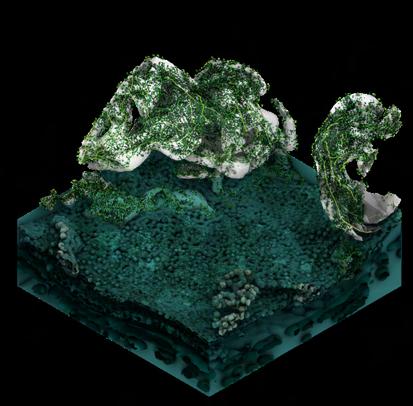
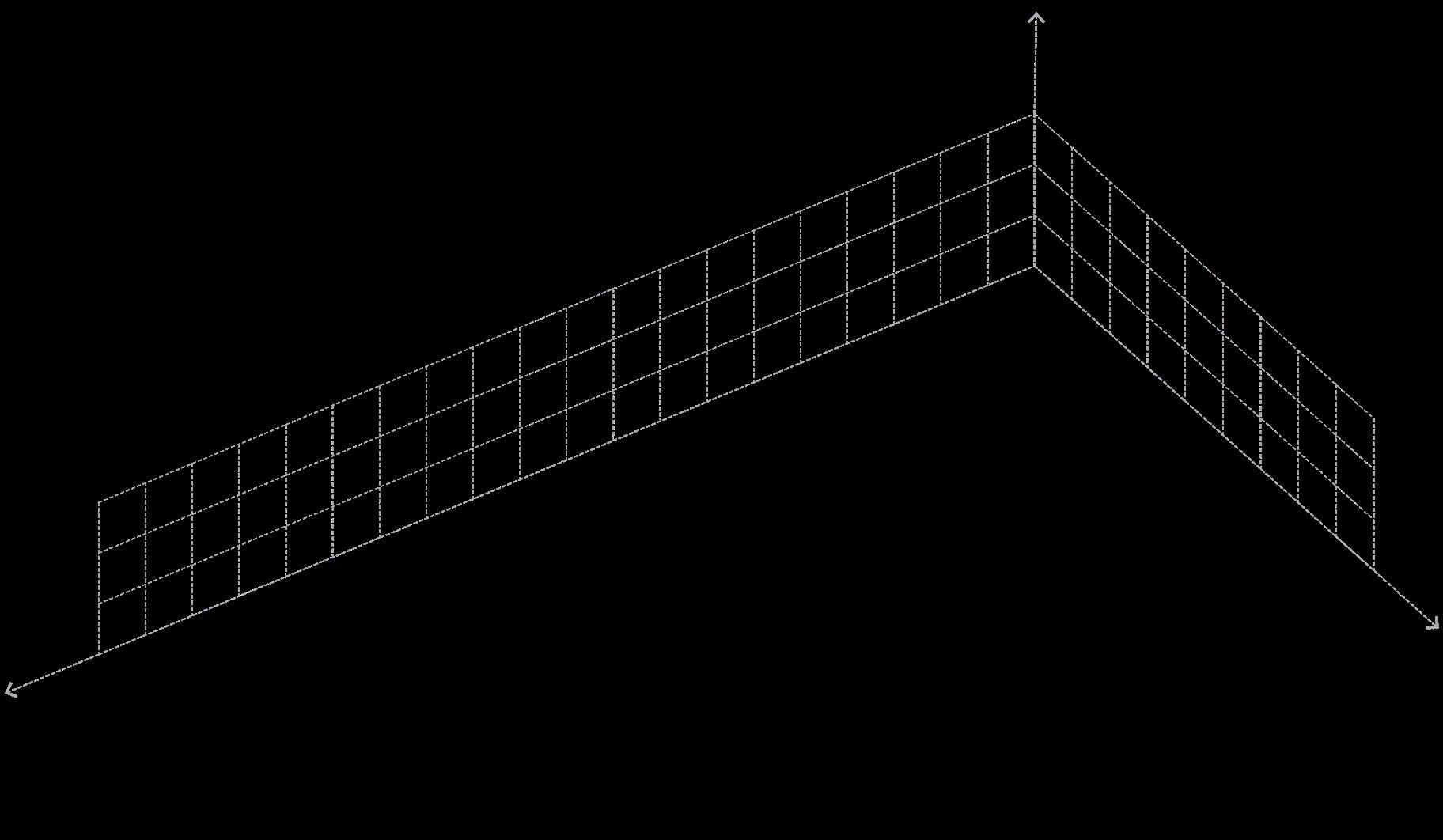



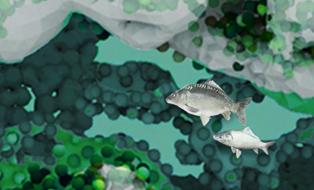

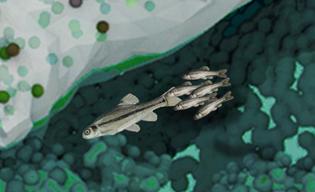
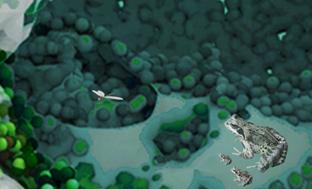

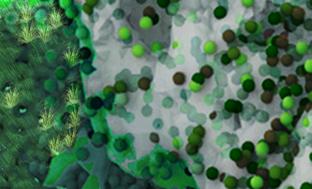
aquatic typology - programmes and potential speciesfig 4.7 tidal areas (human programme) aquatic habitats (nonhuman programme) microalgae ponds (production)
frogs whitewater crawfoot grassesminnows
carps herons
moss microalgae human activity electricity nonhuman activity 29chapter 4 | urban morphogenesis

fig 4.8 woodland typology - biomaterial colonisation and cabling system


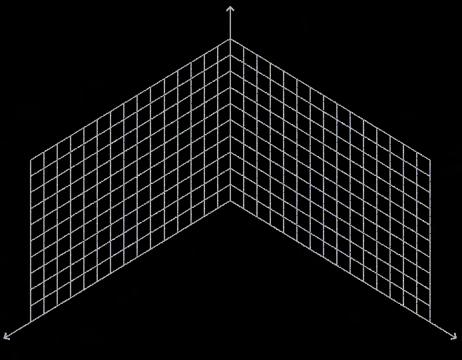
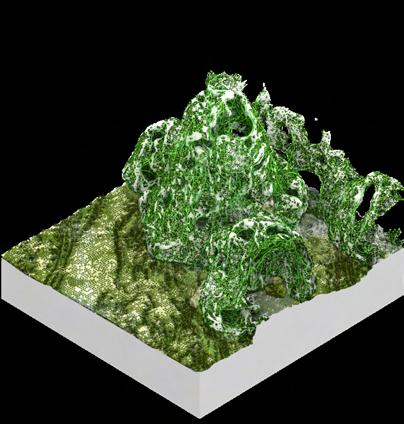


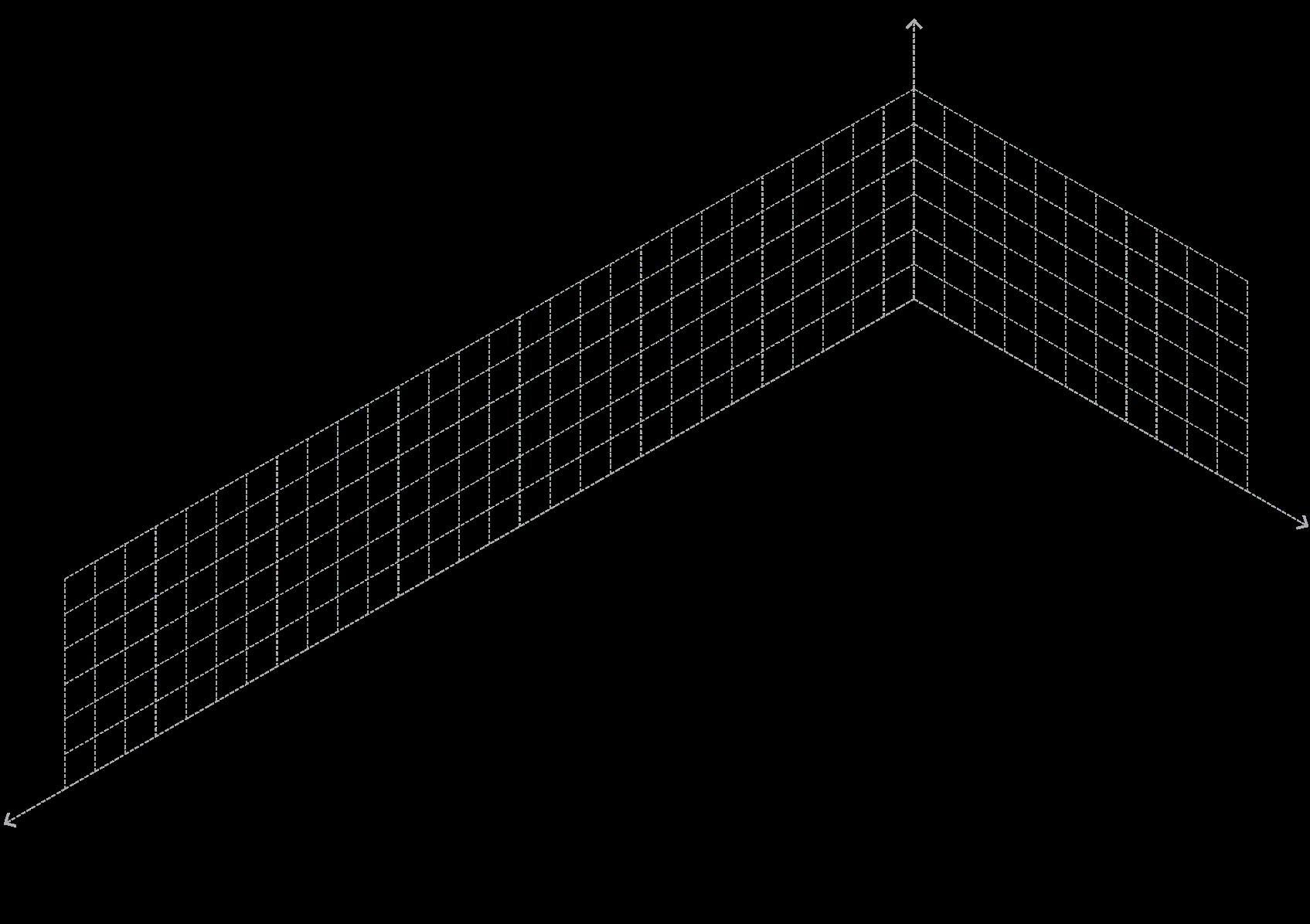

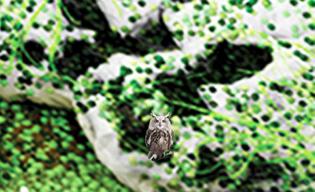



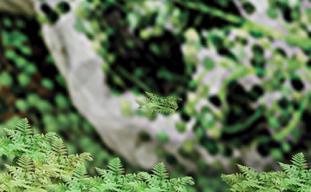

woodland typology - programmes and potential speciesfig 4.9
deers ferns
oak treesfoxes and woodpeckers
owls mosses
moss microalgae human activity electricity nonhuman activity nature reserve moss cultivationwoodland habitats (human programme) (nonhuman programme) (production) 31chapter 4 | urban morphogenesis

fig 4.10 urban typology - biomaterial colonisation and energy storage and extraction system
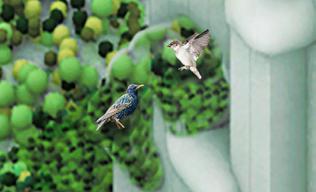
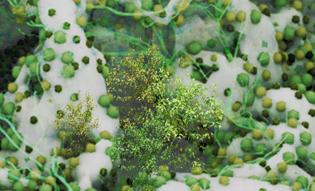

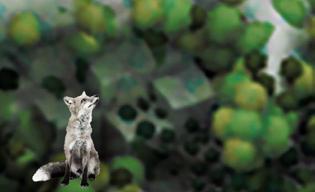

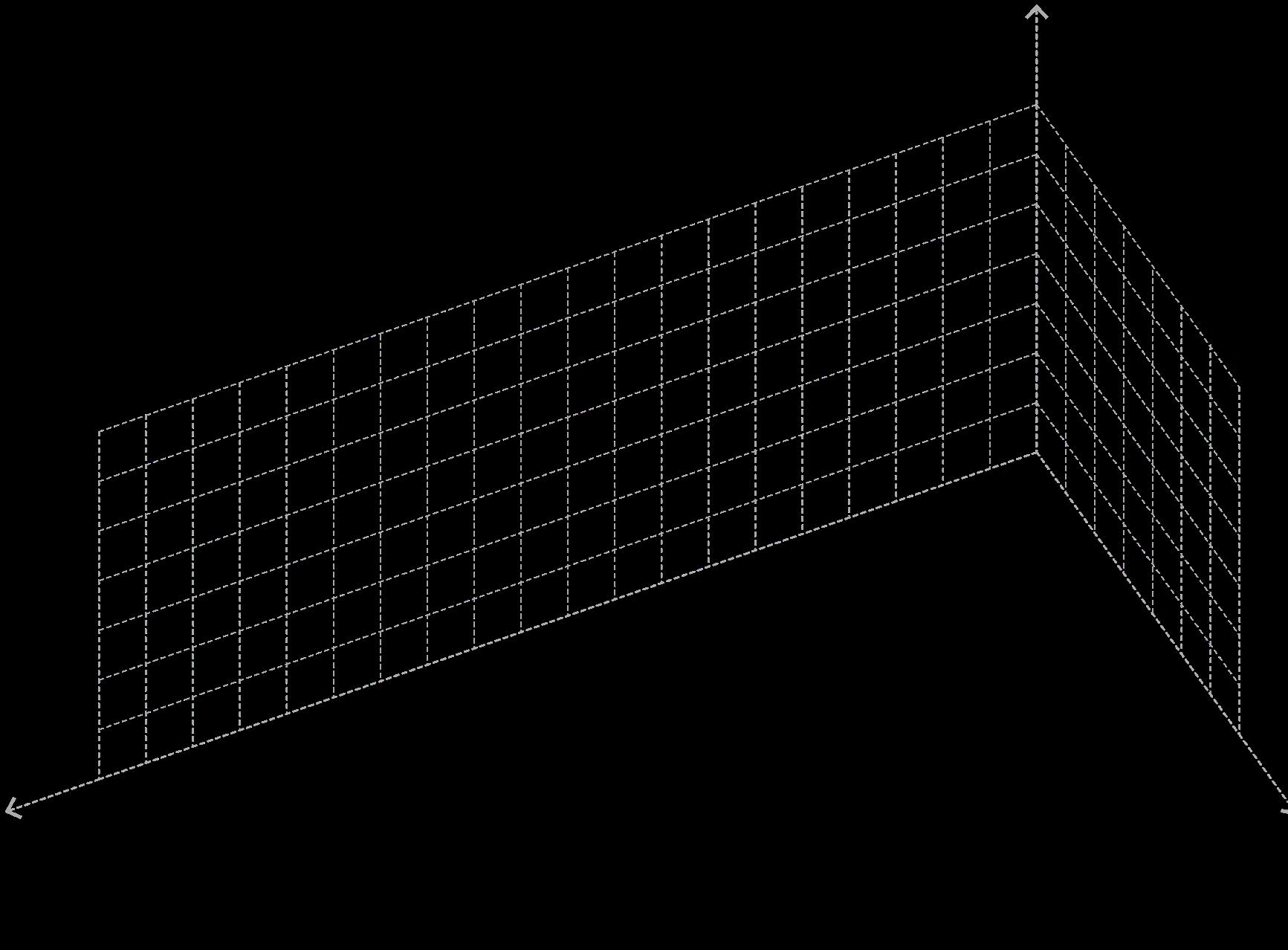
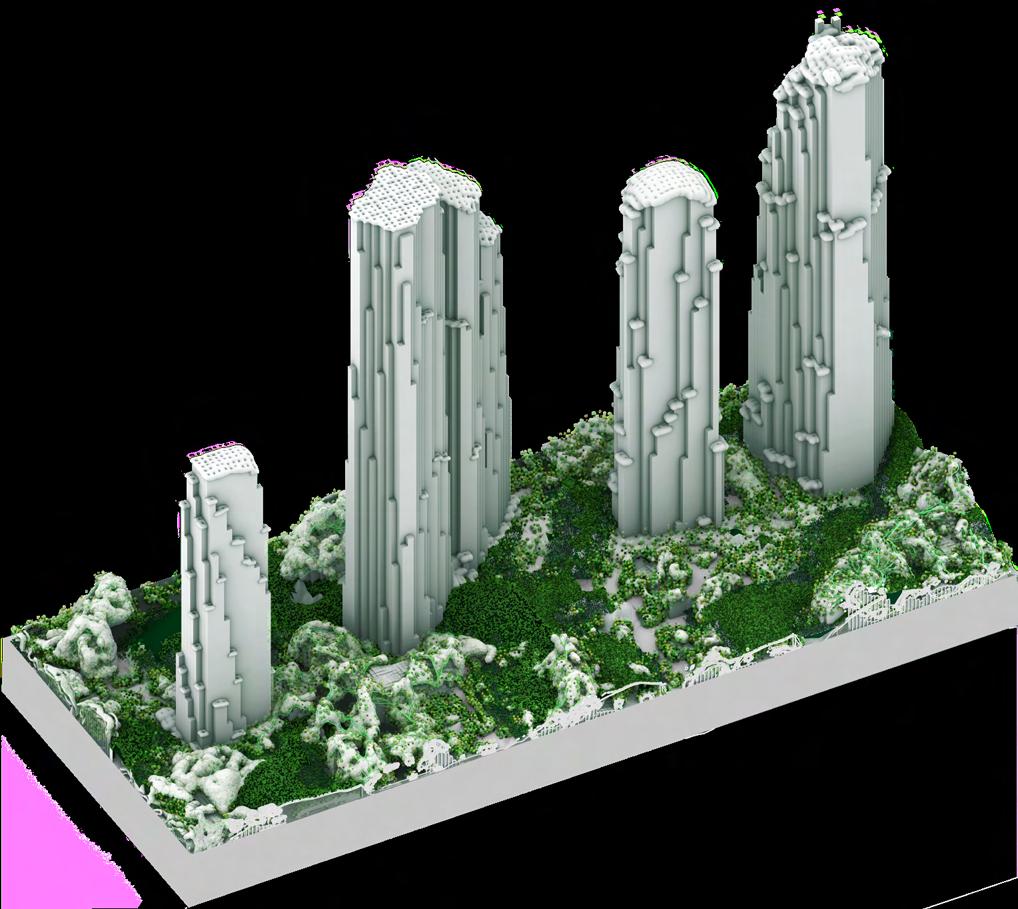
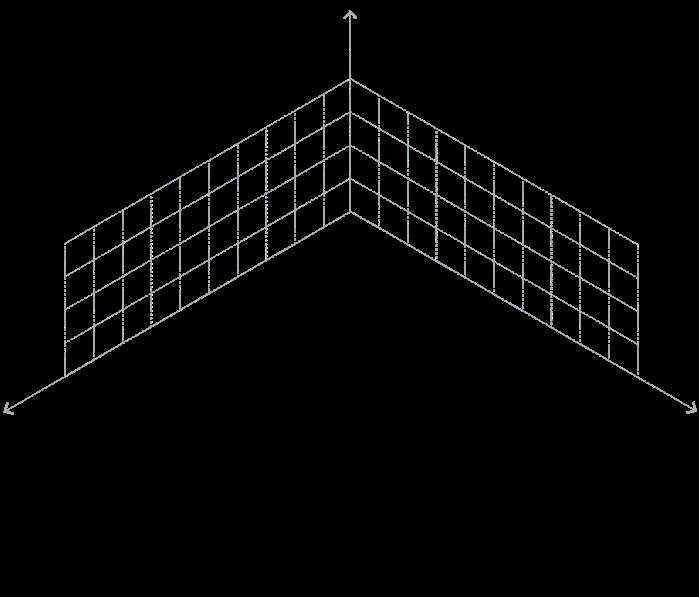
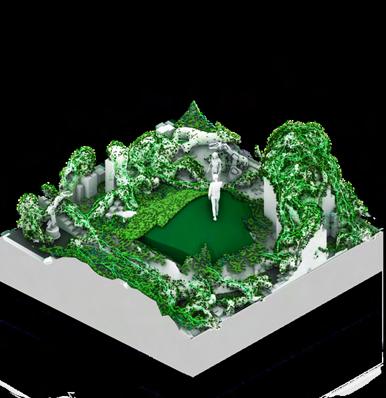




urban typology - programmes and potential speciesfig 4.11
foxes trees rodents
birds shrubs
moss microalgae human activity electricity nonhuman activity individual charging station energy underpasspark (human programme) (nonhuman programme) (production) 33chapter 4 | urban morphogenesis
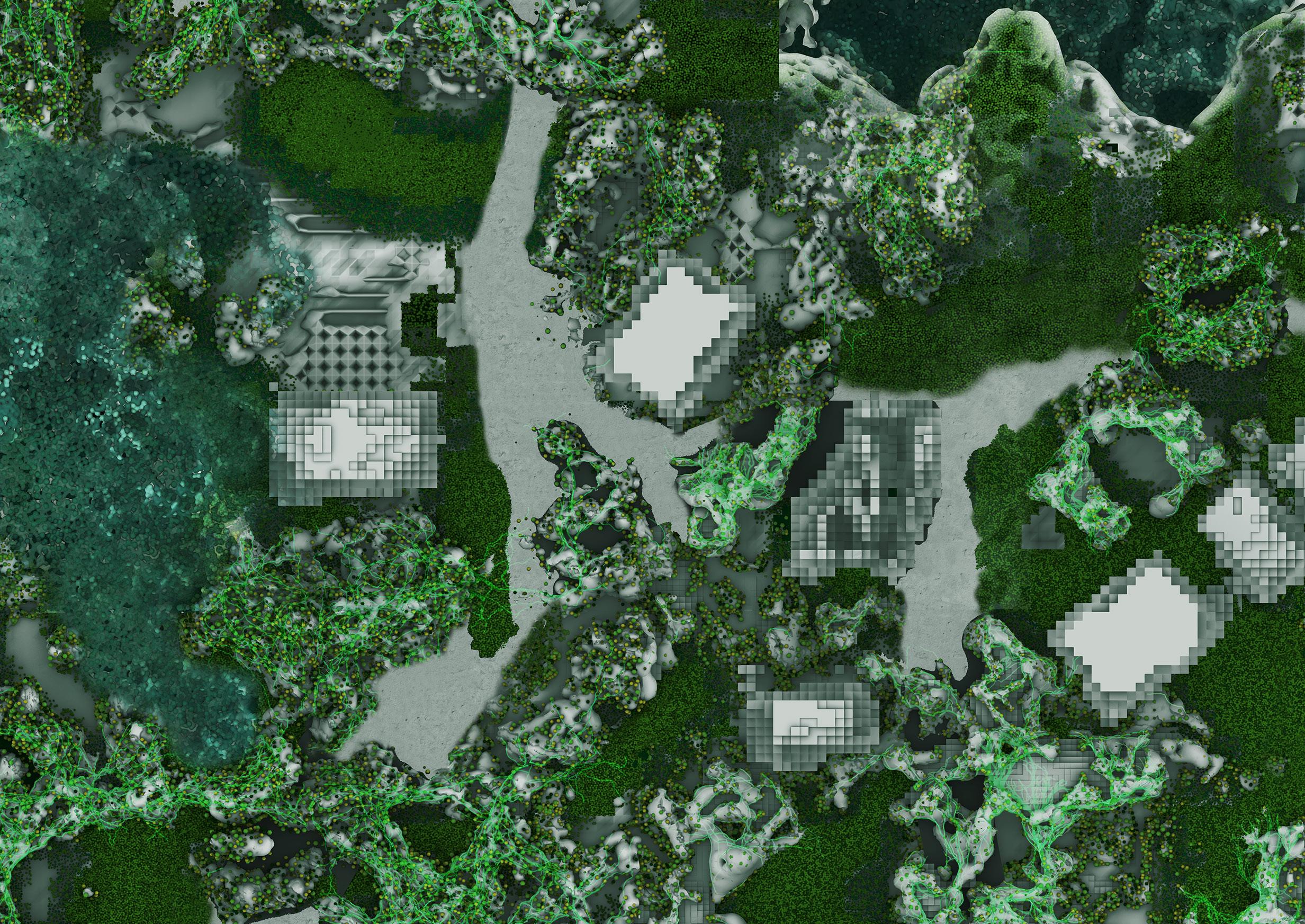
aquatic, woodland, and urban typology - overviewfig 4.12

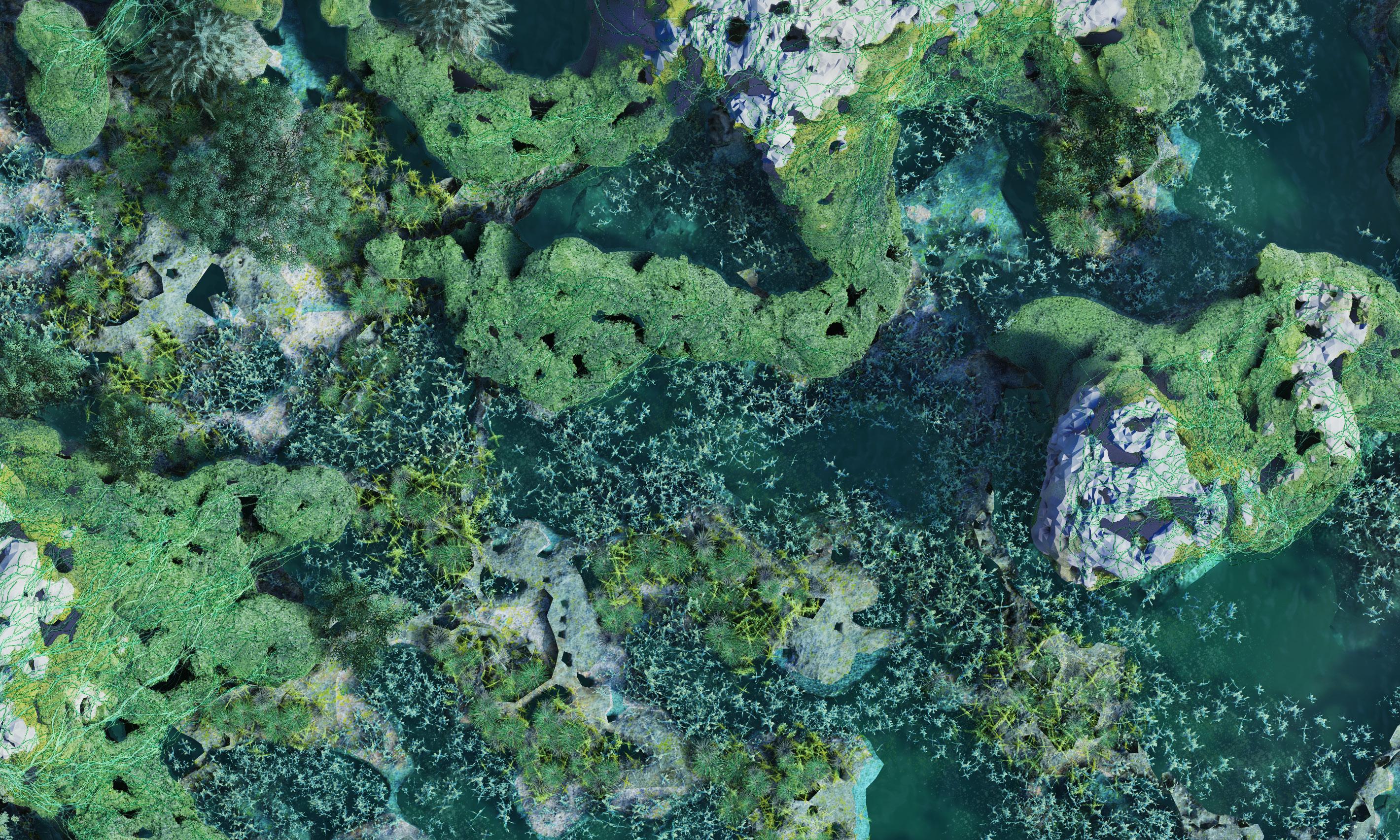
aquatic typology - top viewfig 5.1 voltaic ecotone | RC16 | MArch UD 21-22
chapter 5 | architecture prototype
The ecotones assigned undergo three-dimensional voxelization in order to create physical ecotones for human and nonhuman use. The building blocks of the ecotone are composed of both biological and conductive, mechanical elements. They host the following main layers: a textured stoneware clay substrate, biomaterials such as microalgae gel and moss propagation, along with cabling components.
In order to produce a regenerative bioenergy source, both anodic and cathodic components are introduced to the inner workings of the system. The anodic component is made up chlorella and water absorbing gel, eurynchium moss, and carbon fibers, and the cathodic component is made up as aluminium wool. The combination of these elements then connect to an arduino, where energy then transforms into electricity. The energy is then quantified per square unit in order to assess energy outputs of the system per area.
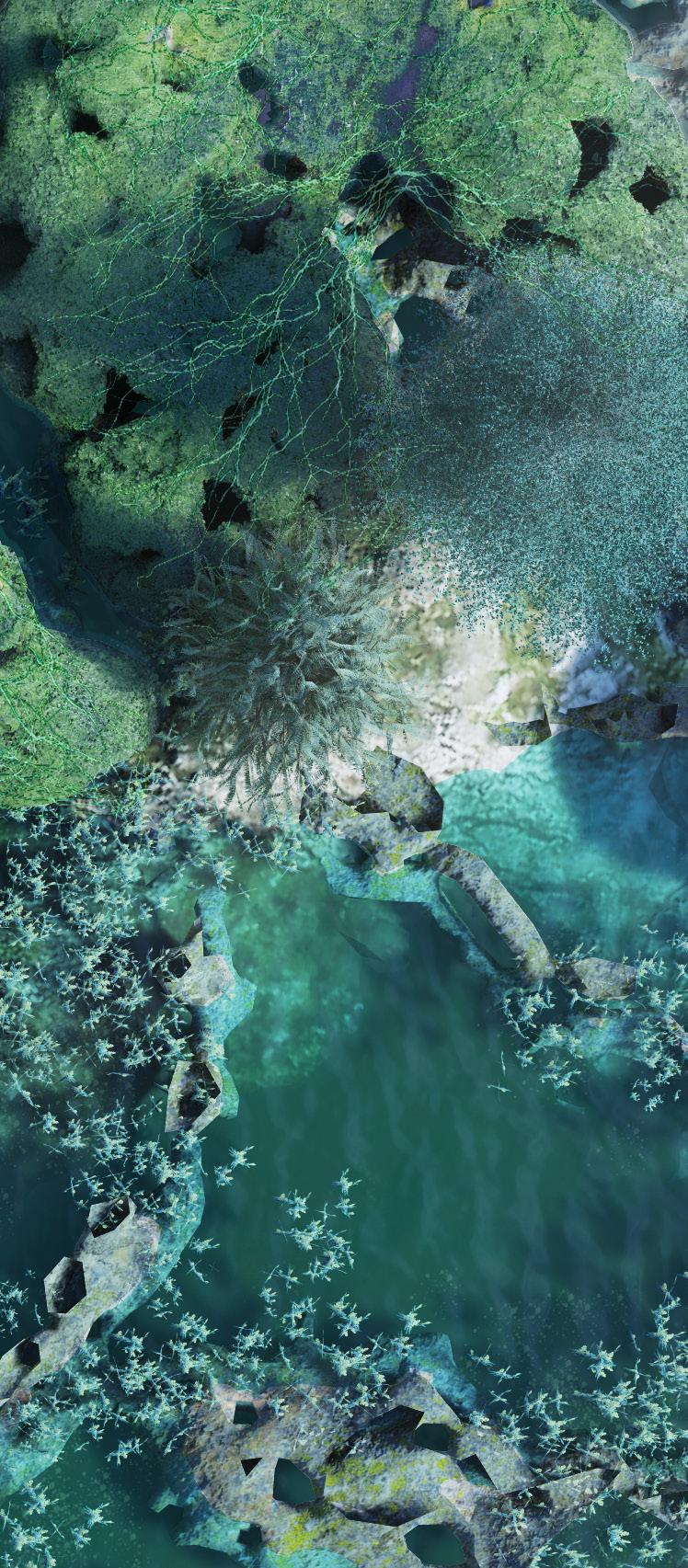
37chapter 5 | architecture prototype
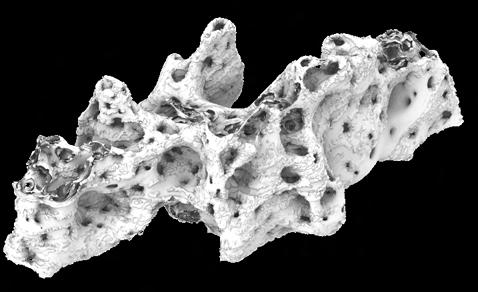

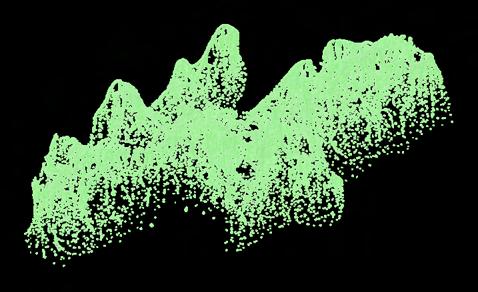


architecture prototype - layersfig 5.2 substrate algae gel biomaterial propagation cabling components voltaic ecotone | RC16 | MArch UD 21-22
moss (Eurhynchium moss)
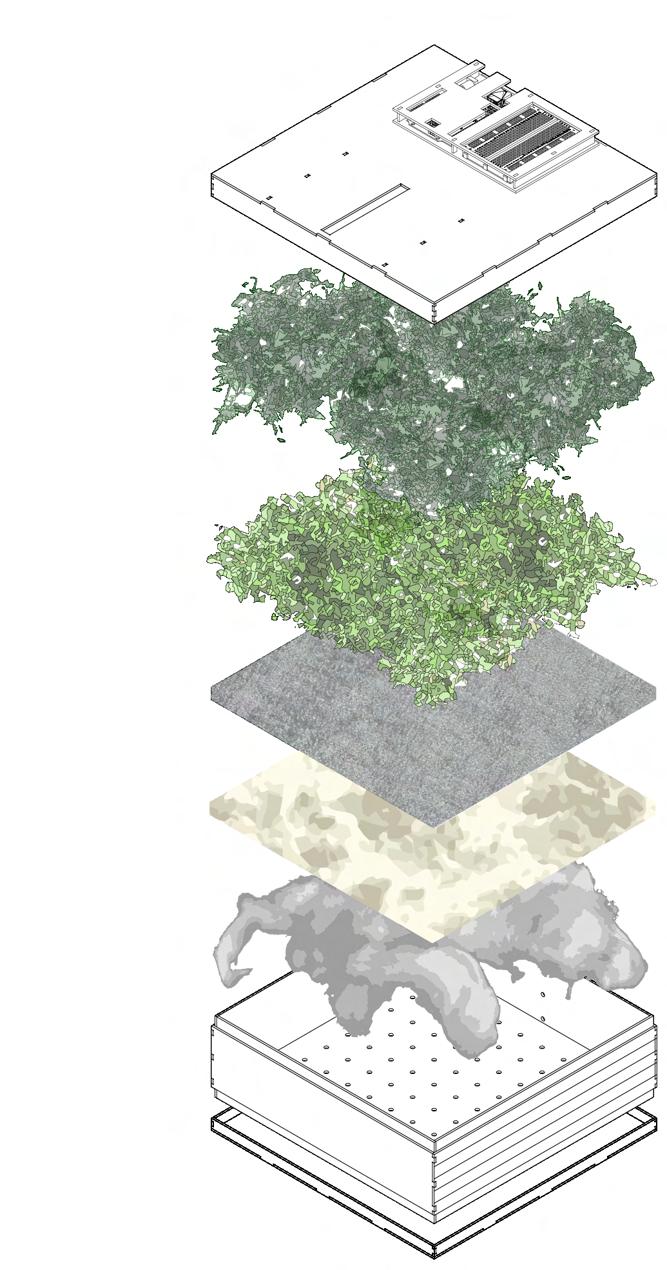
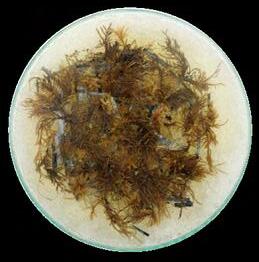
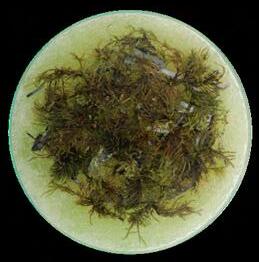
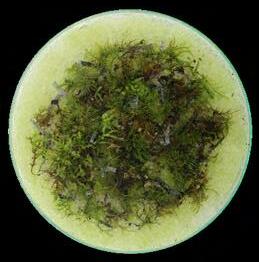


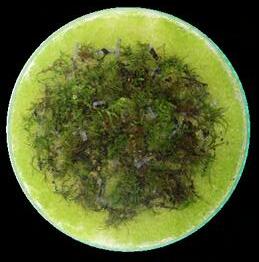

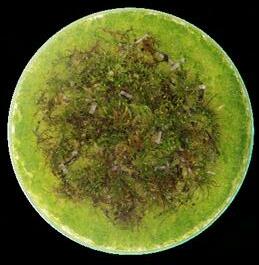


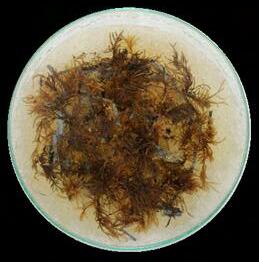



microalgae gel (chlorella + hydrogel)

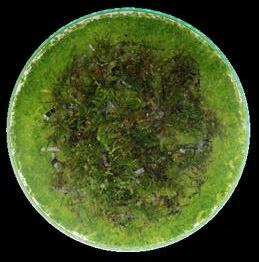
cathodic component (carbon felt) dielectric (zeolite powder)
anodic component (aluminium wool)
container drainage plate
catalogue of symbiosis experiment of moss and microalgae gel electricity experiment - layersright | left | fig 5.3 fig 5.4 chlorella + moss spirulina + moss day 1 day 1 day 9 day 9 day 13 day 13 day 5 day 5 day 15 day 15 day 7 day 7 day 3 day 3 day 11 day 11 lid + arduino
39chapter 5 | architecture prototype
unit
cathode
anode composite

microalgae gel aluminium
breadboard light/lux sensor temperature sensor arduino cabling components
prototypical
fig 5.5 moss
250mm 250mm 210mm voltaic ecotone | RC16 | MArch UD 21-22



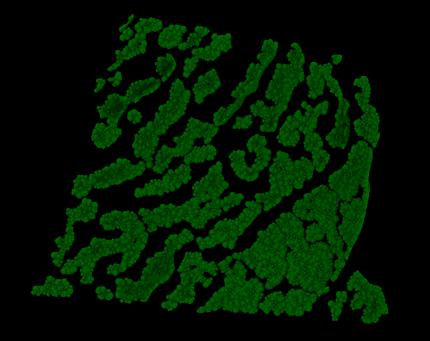


quantification of electricity per unitleft | right | fig 5.6 fig 5.7 substrate construction and simulation - robotic clay printing and moss propagation pattern printed with algae filament lux humidity 0.2 volts temperature voltage data daily average electricity produced per unit (250*250*250): 0 hour 01 02 03 04 0506 07 08 09 10 11 12 13 14 15 16 17 18 19 20 21 22 23 2500 5 10 10 0.05 0.1 0.15 0.2 0.25 0.3 0.35 0.4 0.45 0.5 volts 20 30 40 50 60 70 80 90 100% humidity 15 20 25 30 35 40 °C 5000 7500 10000 12500 15000 17500 20000 22500 25000 lux biomaterial propagation biomaterial propagation biomaterial propagation clay substrate printed with robotic arm 41chapter 5 | architecture prototype

biomaterials and conductive elementsfig 5.8
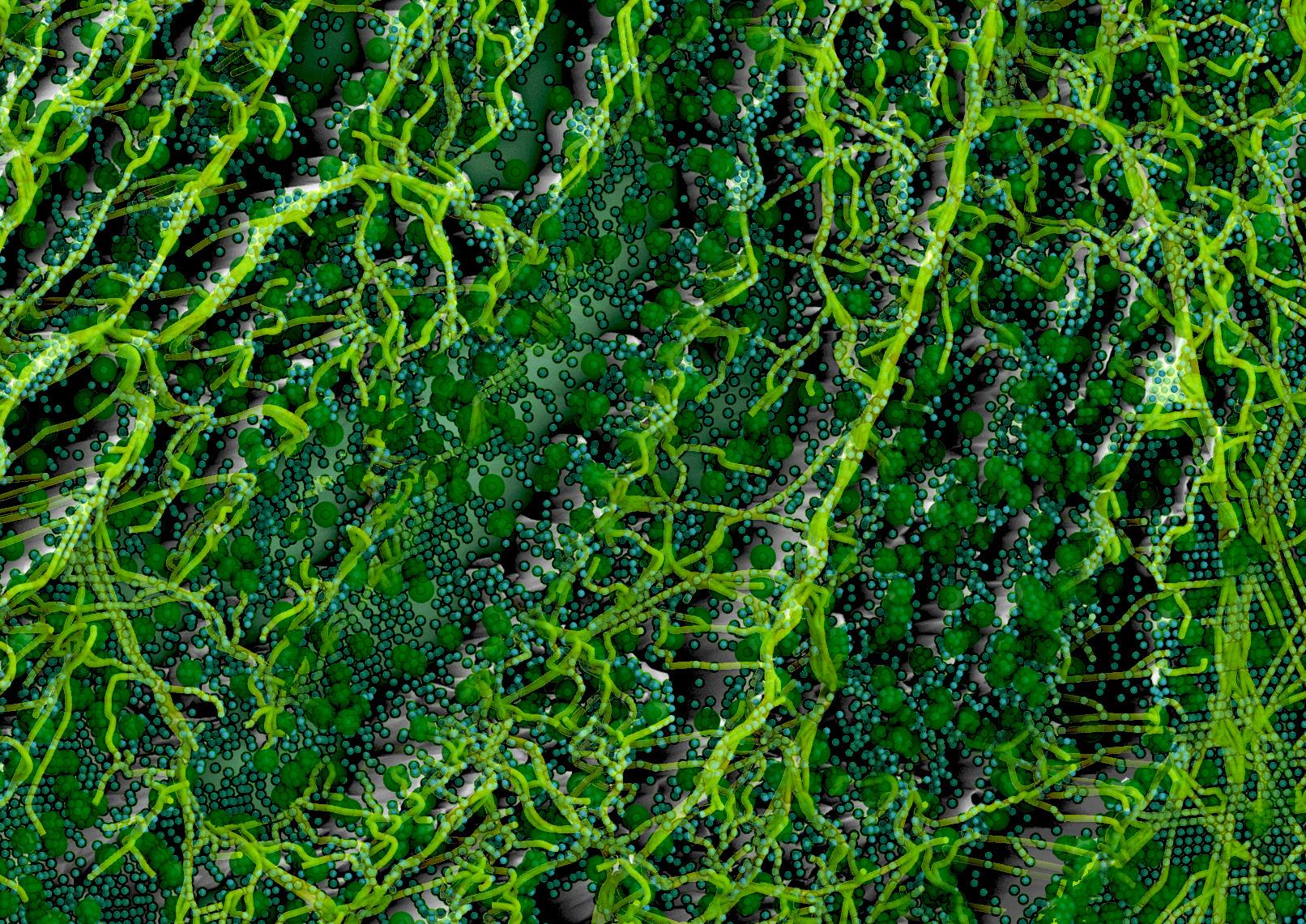

aquatic ecotonefig 5.9

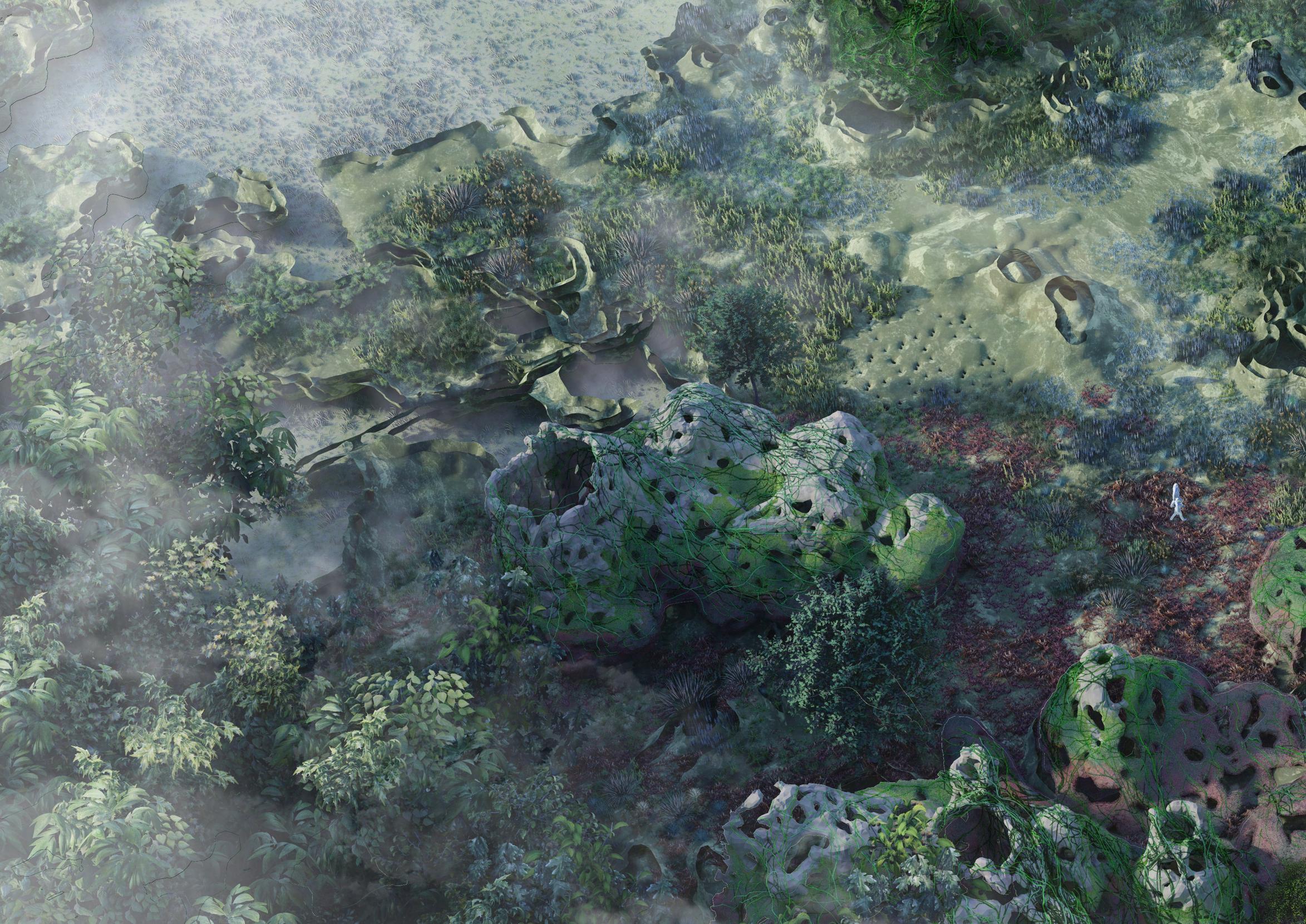
woodland ecotonefig 5.10
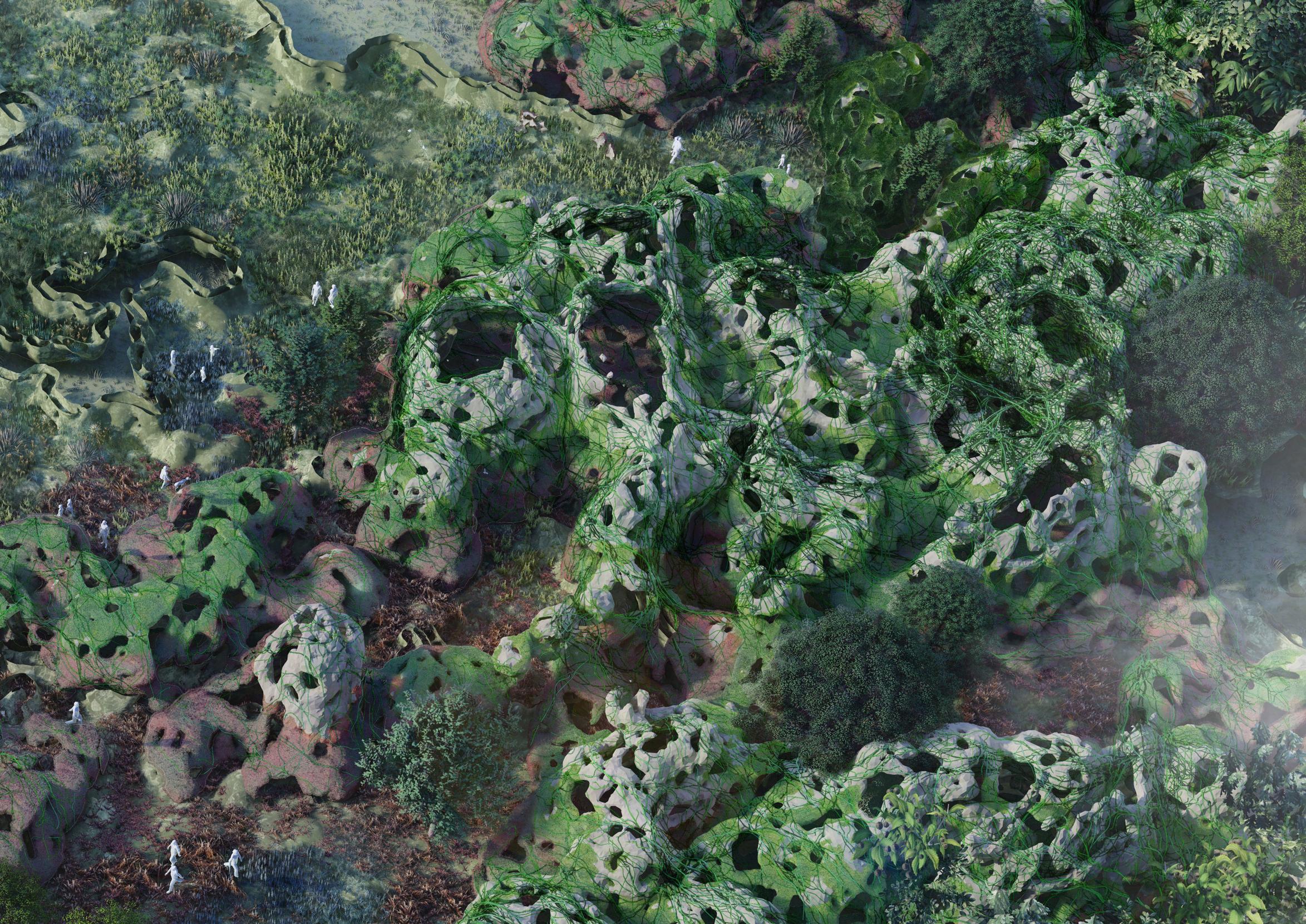

urban ecotonefig 5.11

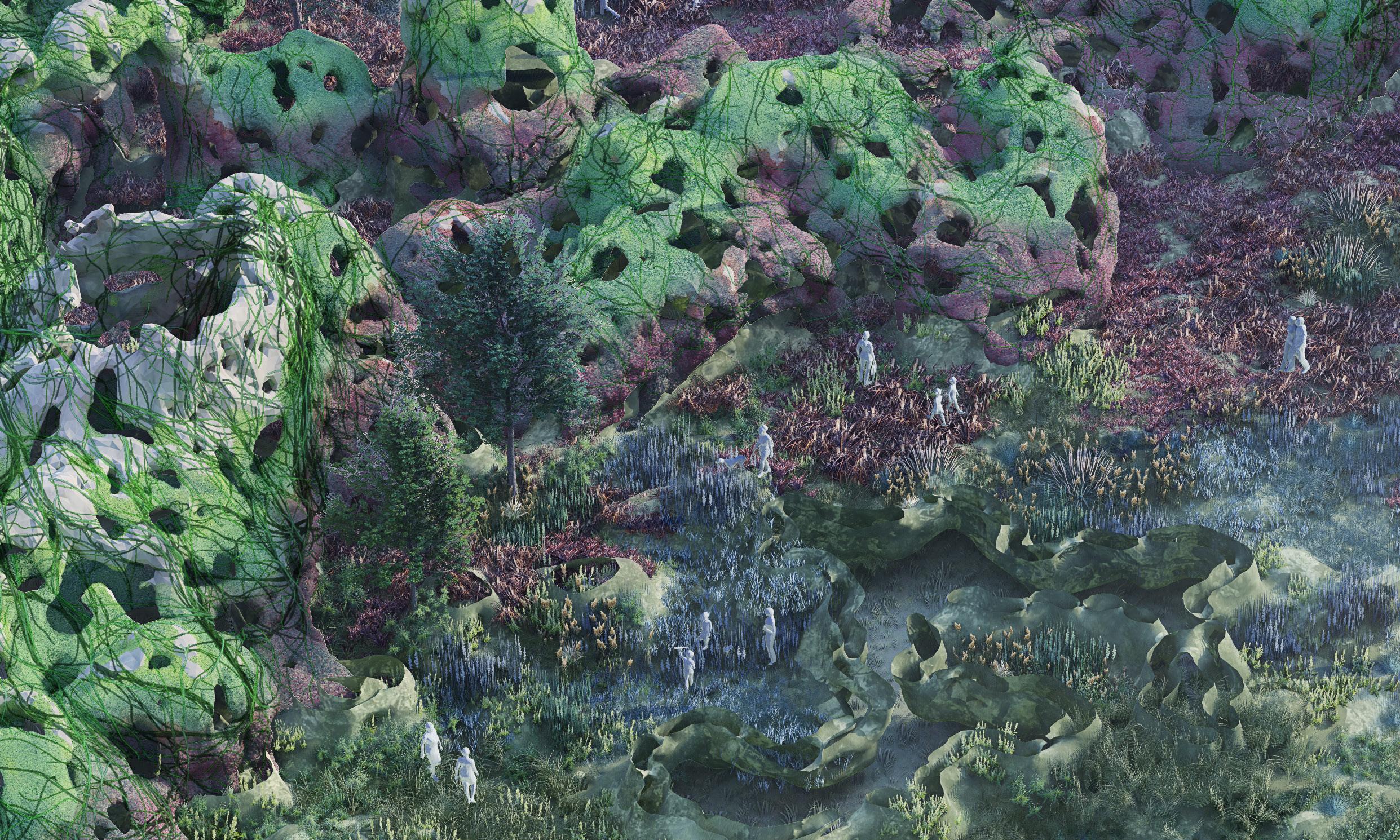
woodland biodiversityfig 5.12 voltaic ecotone | RC16 | MArch UD 21-22
conclusion |
The future city is reimagined as a energy-led productive landscape that looks beyond solving anthropocentric issues. Driven by both artificial and biological intelligence, the new cityscape utilises biomaterials’ photovoltaic capacities and provides an alternative mode of energy production that reminagines network formations in the urbanscape, while creating cross-species justice for all beings.

51
list of figures | fig 1.1. AI-generated image (keywords: moss, algae, postnatural, futuristic, urban) 2 fig 1.2. AI-generated image (keywords: moss, algae gel, electricity, network, future city, connectivity, ecotone, moody, foggy) 4 fig 1.3. world energy usage and trend 6 fig 1.4. development of energy industry in the United Kingdom 7 fig 1.5. development of energy industry in the United Kingdom 8 fig 1.6. centralised and decentralised energy networks 8 fig 1.7. energy transmission in London 9 fig 2.1. AI-generated image (keywords: ecotone, anthropocene, postnatura,l moss, algae, infrastructure, bio intelligence) 10 fig 2.2. symbiotic relationship between moss and microalgae 12 fig 2.3. moss and microalgae and their habitats 12 fig 2.4. habitats distribution in London 13 fig 2.5. microalgae cultivation catalogue - chlorella and spirulina 14 fig 2.6. microalgae cultivation set-up 14 fig 2.7. microalgae and gel mediums catalogue - chlorella and spirulina 15 fig 2.8. microalgae and gel medium experiment set-up 15 fig 3.1. satellite image of Limehouse, East London 16 fig 3.2. moss and microalgae hotspots in East London 18 fig 3.3. energy consumption hotspots in East London 19 fig 3.4. energy network growth 20 fig 3.5. new energy network in East London and urban transformation 21 fig 3.6. machine learning process of generative adversarial network 22 fig 3.7. urban morphogensis of Limhouse, East London 23 fig 4.1. urban transformation of Limehouse, East London 24 fig 4.2. urban transformation 1km 2 area 26 fig 4.3. urban transformation 500m 2 area 26 fig 4.4. voxelisation of urban transformation 500m 2 area 27 fig 4.5. typology allocation of urban transformation 500m 2 area 27 fig 4.6. aquatic typology top view - biomaterial colonisation and microalgae extraction system 28 fig 4.7. aquatic typology - programmes and potential species 29 fig 4.8. woodland typology - biomaterial colonisation and cabling system 30 fig 4.9. woodland typology - programmes and potential species 31 fig 4.10. urban typology - biomaterial colonisation and energy storage and extraction system 32 fig 4.11. urban typology - programmes and potential species 33 fig 4.12. aquatic, woodland, and urban typology - overview 34 fig 5.1. aquatic typology - top view 36 fig 5.2. architecture prototype - layers 38 fig 5.3. catalogue of symbiosis experiment of moss and microalgae gel 39 fig 5.4. electricity experiment - layers 39 fig 5.5. prototypical unit 40 fig 5.6. quantification of electricity per unit 41 fig 5.7. substrate construction and simulation - robotic clay printing and moss propagation pattern printed with algae filament 41 fig 5.8. biomaterials and conductive elements 42 fig 5.9. aquatic ecotone 44 fig 5.10. woodland ecotone 46 fig 5.11. urban ecotone 48 fig 5.12. woodland biodiversity 50 voltaic ecotone | RC16 | MArch UD 21-22
“A Study of Regeneration as Exhibited by Mosses.” 1898. Botanical Gazette, no. 3 (September): 169–210. https://doi.org/10.1086/327726.
Al-Mossawi, Mohammed, Holly Warren, Paul J. Molino, Paul Calvert, and Marc in het Panhuis. 2021. “Living Electrodes Based on Green Algae in Hydrogels.” Materials Advances, no. 4: 1369–77. https://doi.org/10.1039/ d0ma00985g.
Ambrose, Jillian. 2021. “What Caused the UK’s Energy Crisis? | Energy Industry | The Guardian.” The Guardian. The Guardian. September 21, 2021. https://www.theguardian.com/business/2021/sep/21/whatcaused-the-uks-energy-crisis.
Blockeel, T. L., Sam D. S. Bosanquet, M. O. Hill, Christopher David Preston, and British Bryological Society. 2014a. Atlas of British and Irish Bryophytes.
———. 2014b. Atlas of British and Irish Bryophytes. Branzi, Andrea. 2006. No-Stop City. Archizoom Associates. Brock, Thomas D. 1978. “The Genus Cyanidium.” In Springer Series in Microbiology, 255–302. Springer New York. http://dx.doi.org/10.1007/978-1-4612-6284-8
“Orthotrichum in Flora of North America @ Efloras.Org.” n.d. EFloras.Org Home. Accessed April 25, 2022. http://www.efloras.org/florataxon.aspx?flora id=1&taxon id=123298.
“Purple Moss (Ceratodon Purpureus).” n.d. Illinois Wildflowers. Accessed April 25, 2022. https://www. illinoiswildflowers.info/mosses/plants/pp moss.html.
Soni,
Stott,
9. Castenholz, R.W. 2009. “Mats, Microbial.” In Encyclopedia of Microbiology, 278–92. Elsevier. http://dx.doi. org/10.1016/B978-012373944-5.00268-6. Cody, Brian. 2017. Form Follows Energy. Birkhäuser. Demirbas, M. Fatih. 2011. “Biofuels from Algae for Sustainable Development.” Applied Energy, no. 10 (October): 3473–80. https://doi.org/10.1016/j.apenergy.2011.01.059. “Energy Imports in the UK - Statistics & Facts | Statista.” 2021. Statista. July 1, 2021. https://www.statista. com/topics/4938/energy-imports-in-the-united-kingdom-uk/. Felder, Fabienne, Paolo Bombelli, and Ross Dennis. 2014. “Moss FM – Materiability.” Materiability –Materiability Is about Making. 2014. https://materiability.com/moss-fm/. Fortier, Riley. 2020. “30+ Different Types of Moss (And Most Common Moss Species) - PlantSnap.” Plantsnap - Identify Plants, Trees, Mushrooms With An App. https://www.facebook.com/PlantSnap/. November 30, 2020. https://www.plantsnap.com/plantblog/types-of-moss/. Gasparatos, Alexandros, Christopher N.H. Doll, Miguel Esteban, Abubakari Ahmed, and Tabitha A. Olang. 2017. “Renewable Energy and Biodiversity: Implications for Transitioning to a Green Economy.” Renewable and Sustainable Energy Reviews, April, 161–84. https://doi.org/10.1016/j.rser.2016.08.030. Gilman, Sander L., Gilles Deleuze, Felix Guattari, and Brian Massumi. 1989. “A Thousand Plateaus: Capitalism and Schizophrenia.” Journal of Interdisciplinary History, no. 4: 657. https://doi. org/10.2307/203963. “Global Energy Review 2020 – Analysis - IEA.” 2020. IEA. IEA Paris. 2020. https://www.iea.org/reports/ global-energy-review-2020. Goodall, Chris. 2020. “How Much Space Will a 100% Renewables UK Require? | Carbon Commentary.” Carbon Commentary. Carbon Commentary. August 23, 2020. https://www.carboncommentary.com/ blog/2020/8/23/how-much-space-will-a-100-renewables-uk-require. High Resolution (25cm) Vertical Aerial Imagery [JPG geospatial data], Scale 1:500, Tiles: tq3484,tq3483,tq 3482,tq3481,tq3480,tq3284,tq3183,tq3182,tq3181,tq3180,tq3084,tq3083,tq3082,tq3081,tq3080,tq3283,tq3282 ,tq3281,tq3280,tq3384,tq3184,tq3383,tq3382,tq3381,tq3380, Updated: 27 October 2021, Getmapping, Using: EDINA Aerial Digimap Service, <https://digimap.edina.ac.uk>, Downloaded: 2022-08-30 14:21:42.066 Howarth, Jackson. 2019. “When Will Fossil Fuels Run out? | Octopus Energy.” Octopus Energy. December 2019. https://octopus.energy/blog/when-will-fossil-fuels-run-out/. “Hypnum Cupresiforme ‘Sheet Moss’ Care Guide | Vivarium Plants.” 2019. Bantam.Earth. https://www. facebook.com/bantam.earth/. June 6, 2019. https://bantam.earth/sheet-moss-hypnum-cupresiforme/. Kuo, Gioietta. 2019. “When Fossil Fuels Run Out, What Then? - MAHB.” MAHB. https://www.facebook.com/ groups/229287493763308/. May 23, 2019. https://mahb.stanford.edu/library-item/fossil-fuels-run/. Len, Calderone. 2019. “What Is the Future of Non-Renewable Resources? | AltEnergyMag.” Alternative Energy Stories, Videos, Articles, Interviews, Reviews & News | AltEnergyMag. July 23, 2019. https://www. altenergymag.com/article/2019/07/what-is-the-future-of-non-renewable-resources/31346. Levine, Ira, and Joël Fleurence. 2018. Microalgae in Health and Disease Prevention. Academic Press. M., Altmann, Brenninkmeijer A., Lanoix J.-Ch., Ellison D., Crisan A., Hugyecz A., Koreneff G., and Hänninen S. 2010. “Decentralized Energy Systems | Think Tank | European Parliament.” European Parliament. June 14, 2010. https://www.europarl.europa.eu/thinktank/en/document/IPOL-ITRE ET(2010)440280. “Mapped: How the UK Generates Its Electricity - Carbon Brief.” 2015. Carbon Brief. https://www.facebook. com/carbonbrief/. October 12, 2015. https://www.carbonbrief.org/mapped-how-the-uk-generates-itselectricity. Newsroom, Edie. 2021. “Natural England: Biodiversity Critical to Reaching Net-Zero - Edie.” Edie. edie. April 20, 2021. https://www.edie.net/natural-england-biodiversity-critical-to-reaching-net-zero/.
Reeb, Valérie, and Debashish Bhattacharya. 2010. “The Thermo-Acidophilic Cyanidiophyceae (Cyanidiales).” In Cellular Origin, Life in Extreme Habitats and Astrobiology, 409–26. Springer Netherlands. http://dx.doi. org/10.1007/978-90-481-3795-4 22.
Ruma Arora, K. Sudhakar, and R.S. Rana. 2019. “Comparative Study on the Growth Performance of Spirulina Platensis on Modifying Culture Media.” Energy Reports, November, 327–36. https://doi. org/10.1016/j.egyr.2019.02.009, “Statistical Review of World Energy | Energy Economics | Home.” 2021. Bp Global. July 8, 2021. https://www.bp.com/en/global/corporate/energy-economics/statistical-review-ofworld-energy.html.
Rory. 2016. “This Modular Green Wall System Generates Electricity From Moss | ArchDaily.” ArchDaily. ArchDaily. February 24, 2016. https://www.archdaily.com/782664/this-modular-green-wall-systemgenerates-electricity-from-moss. bibliography | chapter 1 architecture prototype 53list of figure and bibliography
For the past centuries, the burning of fossil fuels has been the main source of electricity including coal, natural gas, oil, and nuclear energies, to power cities and habitats. The foreseeable depletion of these non-renewable energies has called for more sustainable renewable sources to be adopted by governments and gradually attain carbon neutrality. However, renewable energy plants have been disrupting the landscape as well as the ecological and environmental phenomena around them, creating a barrier within their micro-environment. The energy gathered by these systems is then collected by governmental and corporate powers, keeping it centralised and not widely distributed to the rest of the city.
VoltaicEcotone proposes a biological energy network model that is integrated into the urban fabric and becomes accessible to humans while fostering non-human habitats in London. This infrastructure is powered by the urban morphological transformation, propagating habitats hosting bio-materials – moss and microalgae – that will be the center of the production of our energy. While being an alternative to renewable and non-renewables, this new infrastructure will be beneficial to humans and non-humans while reducing the environmental impact and connecting back the urban fragments of the city through bioenergy ecotones.
abstract |


































































































































































































































































